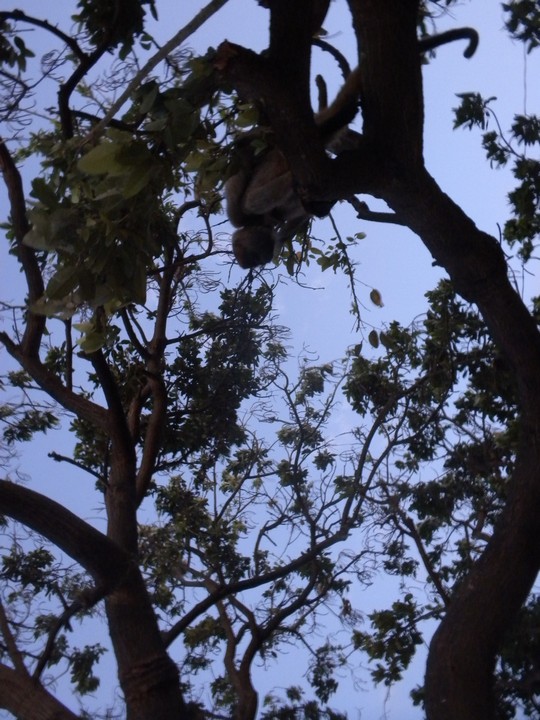
Can you find the monkey in this picture?
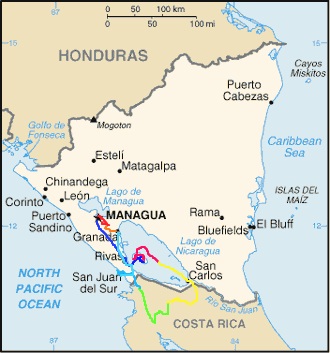
In the years following my discovery of Spirit Airlines, I'd managed, through a series of half-baked trips of two days to two weeks duration, to knock out nearly all the countries of Central America. With only a meager seven nations, connected by friendly land crossings, spread over an area smaller than Texas, this was not a feat on par with seeing all of Africa or Asia, or even the whole of the Caribbean, but was decidedly worthy of filling out the introductory paragraph in the latest entry of an obscure blog. One country had as yet eluded me. Nicaragua, with its myriad volcanoes, vast swathes of rainforest, unexplored caves, and relatively undeveloped tourist industry, appeared a shimmering jewel between over-exploited Costa Rica and the less interesting cowboy country of Honduras. Tickets were routinely in the $3-400 range and this had made weekend trips infeasible, but a month before the spring/summer break week, the price had dropped to a much more bearable $220.
I once dreamed of retiring early and whiling away my days on the glistening white sands of Siesta Key or a similar locale, but the premise of care-free vacation has long since lost its luster. Why anyone should want to willfully detach themselves from the endless challenges, the infinite nuances that life has to offer, is incomprehensible to me. Each moment spent relaxing in the sun is an opportunity lost, a passed turn. And besides, why should one spend fifty weeks a year awaiting a reprieve of two, when the fifty could just as easily be made to be respite from the same two?
In the early days, it was enough to see as many sights as possible. A raging waterfall or intricately carved temple was still novel and awe-inspiring, and one could get some degree of satisfaction by checking a list and trying to convey the grandeur of the natural and manmade wonders of the world to those back home. This exercise grows old soon enough, and is supplanted by the challenge of navigating each new environment and adapting to each new culture, in spite of material and linguistic constraints. In the end, however, civilization conforms to a limited set of patterns, and, to a large degree, becomes predictable. This is particularly true of Latin America, where traditions are largely consistent across national lines, and the long, slimy tendrils of the western monoculture are rapidly encroaching on even the remotest corners of the jungles and mountains and islands.
So where does that leave the pathological peregrinator? What is left to explore, when each new place can be reduced to a recombination of previously observed variables? In a word, people. While cultures and scenery motifs, and travel adaptations are fairly limited, the potential for variety in the human consciousness is practically boundless. And when you factor in the effects of unfamiliar stimuli and group dynamics, travel companions can serve as an endless wellspring of new and interesting experiences.
I put a vague trip description with all the usual warnings of sleep deprivation, endless hiking, and general punishment out on the OAR listserve. Destiny and Carolanne were the first to sign up and I bought tickets for the three of us. Destiny's friend, Kelly, emailed a few days later, but I feared the dynamic that might arise with such odds, so I said she could only go on the condition that another guy signed on. Matt eventually got permission from his boss and bought his ticket. Mike and Rachel secured theirs shortly after.
The departure date was the Saturday after exams week, and I was the only one of the group still in town. We were to meet at Frank's house at 2:30 and Rachel arrived from Jacksonville some 15 minutes before; Mike came directly from a weeklong caving trip a few minutes later. Carolanne was already at her house in Ft. Lauderdale and Destiny and Kelly would be crossing from Naples that evening. Matt just wanted to squeeze in one last ride on his motorcycle, so he requested a pickup in Ocala and left around the same time as us. The only operable vehicle available to the three of us was Rachel's brand-new Jeep, which had roughly the mass and fuel economy of a Soviet tank.
The great part about picking Matt up from his parents' house (aside from the 30-minute detour from the highway) was the wonderfully awkward encounter with his worried mother, who seemed a tad skeptical about our destination and our ability to return her son in one piece. We reassured her ad nauseam while eating leftover pasta salad and debating whether it might not be better to take a couple of the family dirtbikes down to the airport to save on gas. As we walked out to the car, his mom nonchalantly asked me ‘So you were on the Grand Canyon trip with Alex?' Without much thought, I replied in the affirmative, only afterward recalling that we had secretly stolen Alex's car for the trip, having him cover with a story about going to North Carolina for the break. As it turned out, Alex shared a bank account with his parents and had left a very easy-to-follow paper trail. I awkwardly chuckled over this for a few seconds and then abruptly jumped in the jeep and closed the door.
We parked the tank at Carolanne's; her family welcomed us with copious amounts of homemade pizza and drove us to the airport, not hesitating for a second in agreeing to retrieve us upon our return at 5:30am the following Sunday. Destiny and Kelly had passed through security an hour before we arrived and we all met up at the gate; we briefly reflected on how none of us had as-of-yet done any research for the trip, and then passed out on the benches to await our midnight flight. Some of us managed another quick nap on the 2.5 hour flight before arriving in Managua at 12:30am in a somewhat stupefied state.
And thus we found ourselves sitting on the floor of the Managua airport arrivals lounge, avoiding a rather inebriated homeless guy and brainstorming on what the next step would be. The soundest suggestion seemed to be to try to get some sleep and head for the bus station at dawn. Then the taxi driver came up. I'm going to call him Jose. He confirmed what we already knew in that it was three hours til the next bus and a $15 taxi ride to the bus station; having informed us on these matters without managing to secure a bit of business for himself, he walked away smiling. After twenty minutes or so, he returned, having finally realized a way to capitalize on the situation. He would drive us all the way to the docks in San Jorge for $80. This would work out to $12 a person, or roughly double the cost of taking a bus, but avoiding the hassle seemed worth it. We had intended to get the price lowered to $70, but, before any negotiating could be done, the entire group got up as if to leave and our counter-offer was easily shot down on the grounds of rising gas prices. We stuffed the seven of us and Jose into his Corolla and drove two hours south along the pitch black Interamericana.
We arrived at the ferry dock at 4am, a full three hours before the first boat, and promptly passed out on the benches. We were awoken at 5 by the fifty or so mynah birds that had nested in the tree directly overhead. Looking around, we discovered that two monkeys were chained up in an adjacent tree. We walked up and down the beach; a busload of people had just arrived and started setting up for a grand fiesta of some sort; two inflatable pool toy vendors were quickly unloading their wares. We boarded our boat around 6 and each picked out a bench for another nap. We awoke at the behest of the ticket seller when we were halfway across the lake and found that we were then surrounded by Nicaraguan tourists who had completely filled the remaining benches. We landed in Moyogalpa at 8am and went for breakfast; the town turned out to be exceptionally touristy and we had to settle for the hippie variant of gallo pinto and some toast for the elevated price of 40 cordobas. We found a guy renting motorbikes, but debated for a time as to whether we wanted to take such a large step toward endangering our lives and finances on the first day of the trip; we had resolved to take the bus instead, but were intercepted by the rental guy on our way to the station and were easily convinced to take the bikes.
We paid $35 for a 28-hour rental on each of four 125cc Kayak dirt bikes and $50 for each deposit. They had only taken our first names and license numbers and we mused whether we might cross into Honduras and drive the bikes back to the States. Matt had been offroading since he was a small child, but Mike and I had only minimal experience on bikes, and the rest had zero. The shop owner didn't seem particularly concerned by this and gave Destiny a quick five-minute lesson before certifying that we were ready to take off. We assigned passengers and bungee'd two packs to each rack; I got Carolanne, Mike had Rachel, Matt had Kelly and Destiny went solo. We sped out of town and down the highway, quickly refreshing our memories on how to brake for wandering babies, jump speed bumps at high speed, and swerve around unpredictable cows. The massive Volcan Concepcion loomed to one side.
Crossing to the Madera side of the island, the nicely paved highway shortly changed over to a very rough boulder-field. Oddly, Matt was the first to wipe out in some gravel. Destiny soon followed in a deep patch of sugar sand. Mike drove right past the turnoff for the waterfall and I chased him for 10 minutes, while honking my horn, before giving up and stopping to wait for him to turn around. Navigating the road up to the waterfall was not advised for new riders, but we decided to give it a go all the same. Reaching the first steep stretch, Mike neglected to downshift and stalled, then proceeded to roll backwards toward Matt who subsequently rolled towards Destiny, who then rolled back into me, knocking my bike over. The engine flooded a bit but started with some coaxing. From there, we did fine up until the next steep stretch where I lost momentum, drifted towards the cliff and fell over. I convinced Carolanne to walk the rest of the way and did the last half kilometer up to the parking lot solo. At some point, Destiny had a traumatic wreck where she shattered one mirror and bloodied her nose and chin, and opted to leave her bike down below and walk the rest of the way.
From the parking lot, it was a 2km hike to a waterfall that, though clearly grand at one time, was presently little more than a trickle. Given the effort it had taken to get that far, we naturally deluded ourselves into thinking that this was a truly awesome spectacle and stripped down to refresh ourselves in the frigid drippings. On the return hike, we encountered a group of horses that were pretty effectively blocking the only path out. We tentatively started to sneak around, but one of the horses stamped its hind leg as if to kick. The second time Mike approached, the same horse suddenly wigged out and effected a small stampede in our direction - we all dived off the trail into the surrounding jungle, just in time to avoid a vicious trampling. The sun was rapidly setting and we were making very little progress. Then Rachel discovered that by twirling a palm frond in a circle in front of her, she could make the beasts retreat a little, and, bit by bit, we were able to coax the herd along the last hundred yards of trail. Since Destiny and Kelly were walking, I offloaded Carolanne on Matt, then Mike, Rachel and I sped down the mountain. The others came along eventually, and we were left to negotiate the remaining 14km to the hostel in that awkward interval where the bugs are out in force but it's slightly too dark for protective sunglasses.
We arrived at the Hostel Zopilote sign shortly after the last glimmer of evening light had faded way. A family across the road invited us to park our bikes in their yard, presumably at no cost. A group of hippies were returning to the hostel and led us up through the confusing maze of farms and forest to the communal kitchen. Just up the hill, the guy on staff was not particularly receptive to our plan to stuff seven people into one cabin, and, after much debate, we resigned to put three people in a dorm, two people in a cabin, and two people in hammocks for 55 cordobas a hammock and twice that for each bed. When we went to check out the cabin, we discovered a small boa constrictor resting on a tent directly underneath; Destiny abruptly decided that she would prefer the dorm. We briefly toured the composting toilets, outdoor showers, and other amenities, before heading back down the hill to Mi Casita restaurant just across the street.
Our dinner took an hour to prepare and nearly everyone had drifted off to sleep by the time it arrived. The chicken, for 65 cordobas including the standard gallo pinto, patacones and salad, was delicious and ample enough for two. Mike and Rachel and the key to my cabin got lost in some farms on the way back, so I spent the next half hour visiting the hostel's petroglyphs and lookout tower, and then, upon their return, promptly crashed in my hammock.

Can you find the monkey in this picture?
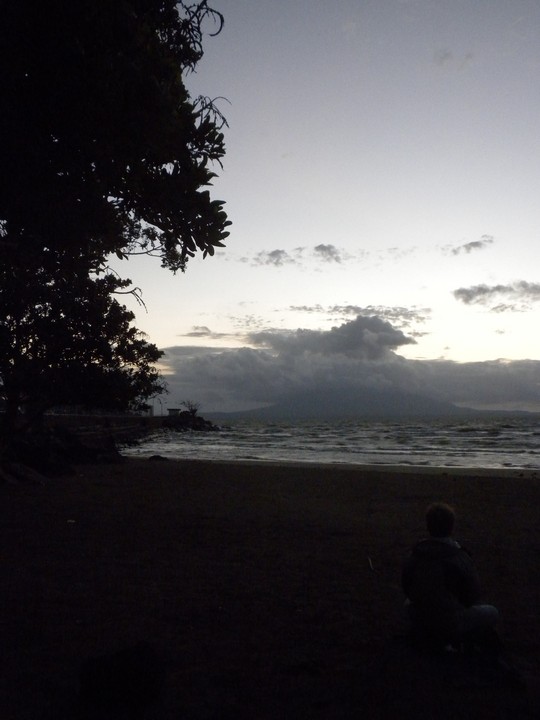
How could you sleep when there's stars and planets and volcanos to watch?

Mike improvises

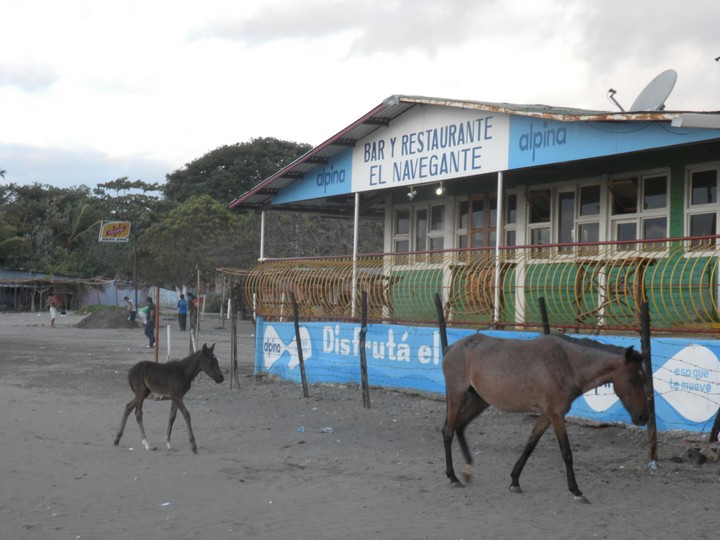

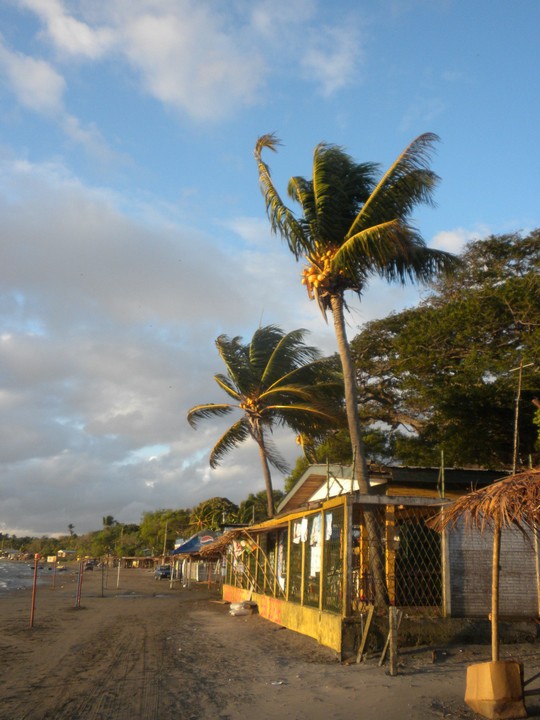
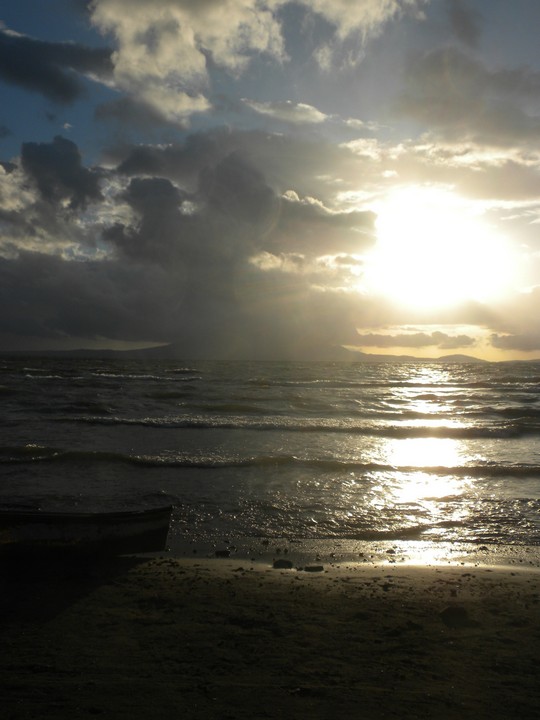
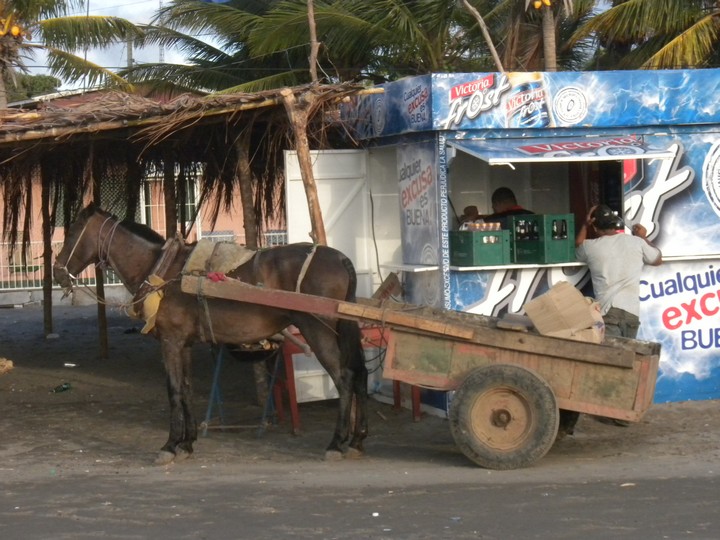

Ferry to Ometepe - benches a plenty to pass out on
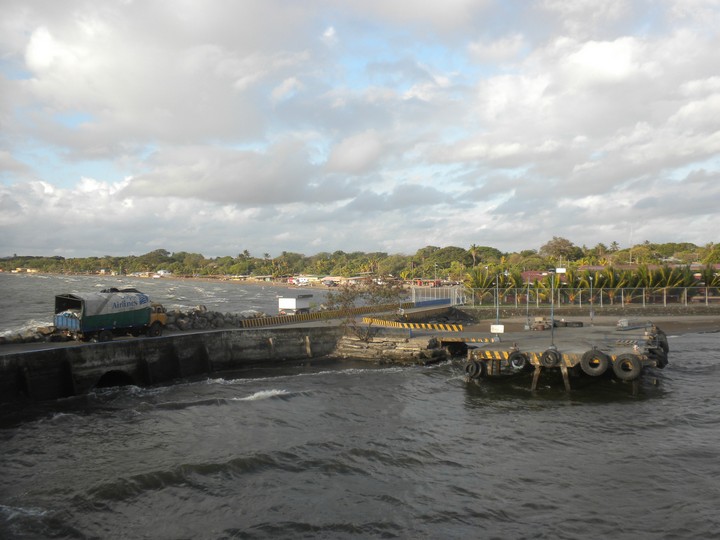
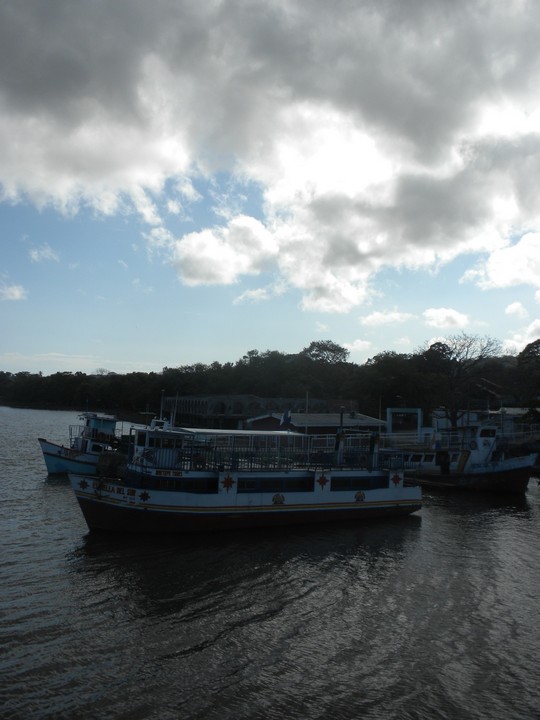
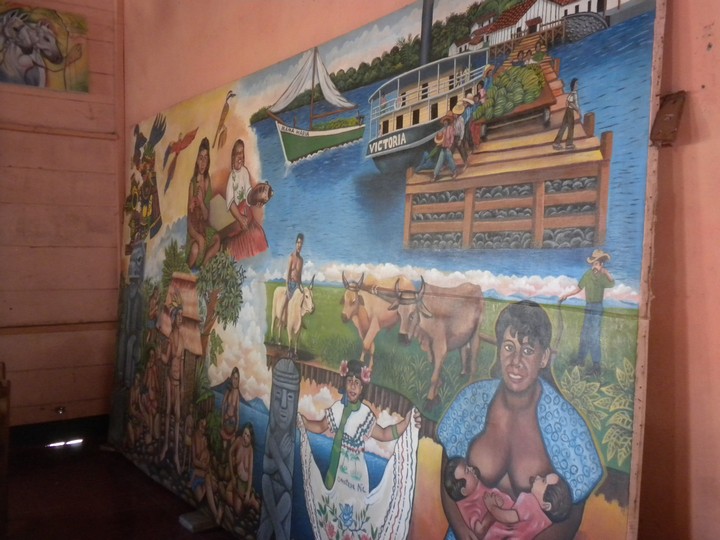
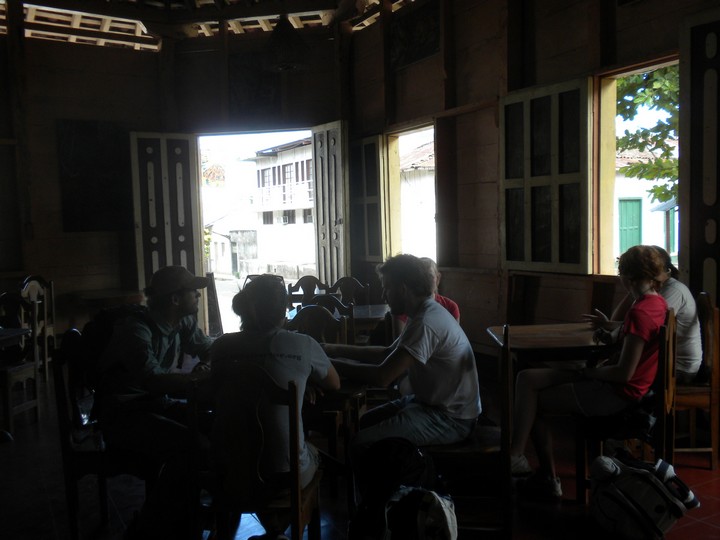
Touristy breakfast joint
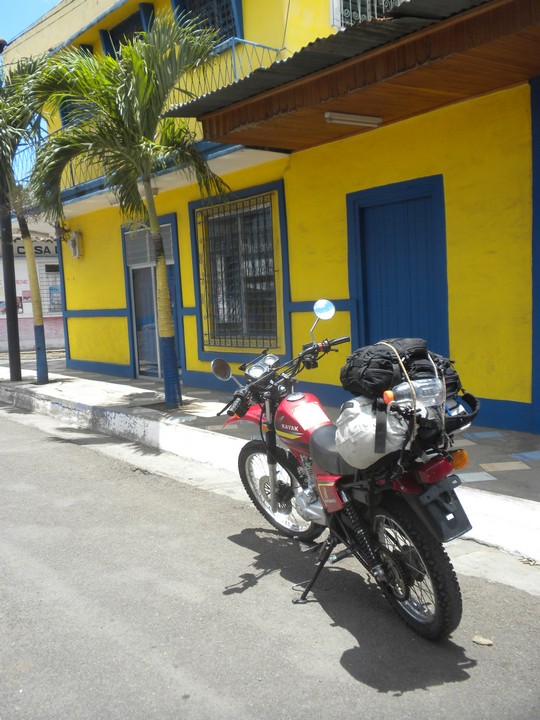
Riding 2-deep on terrible roads with next to no experience? What could possibly go wrong?
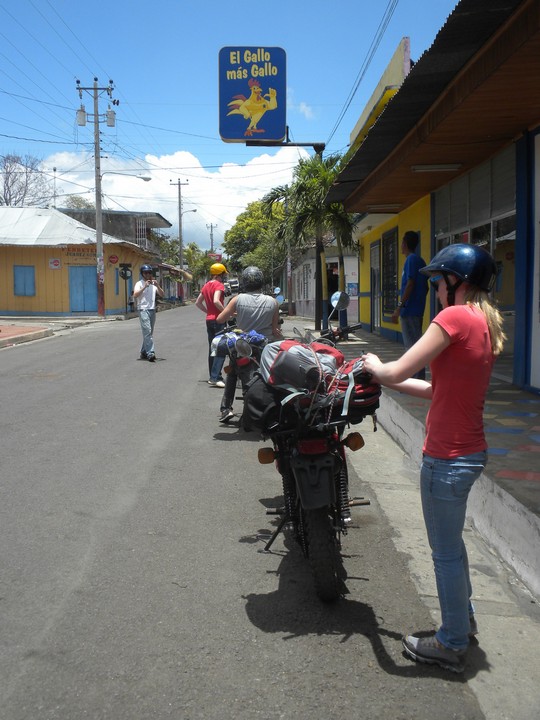
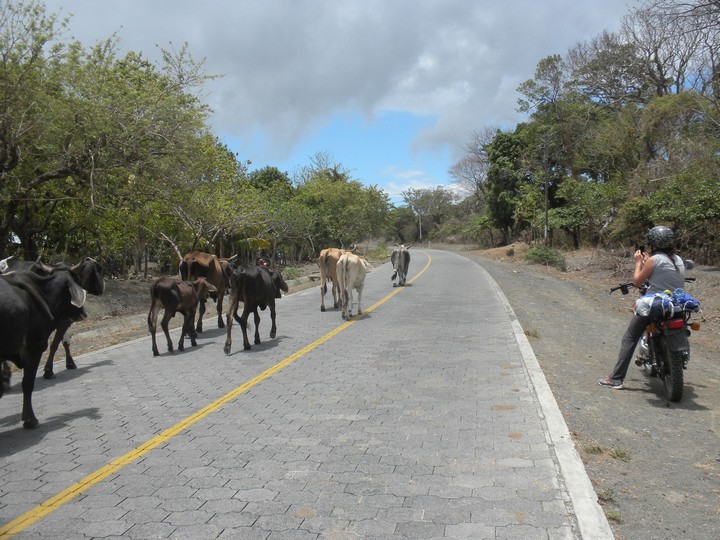
Traffic

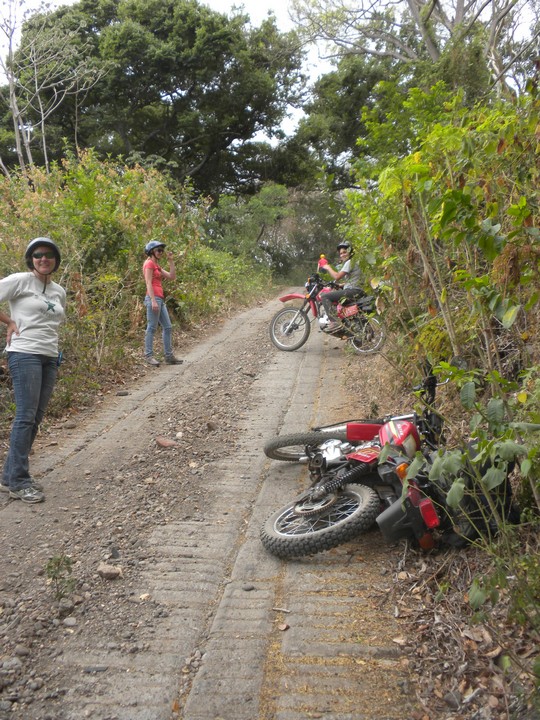
'I threw it on the ground!'

The Cascadas San Ramon - pretty weak
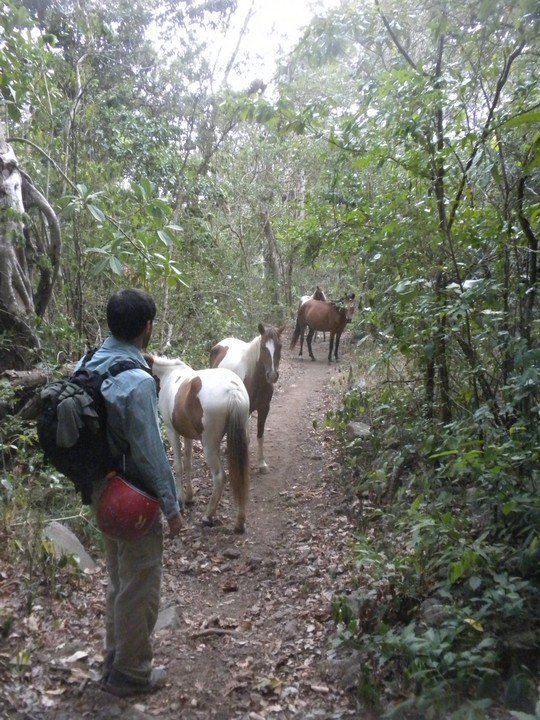
These horses were not inclined to move from the trail
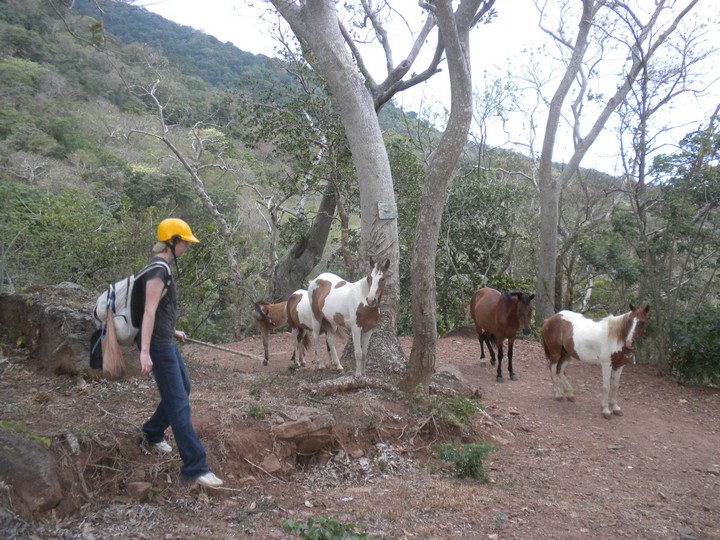
Rachel the horse whisperer

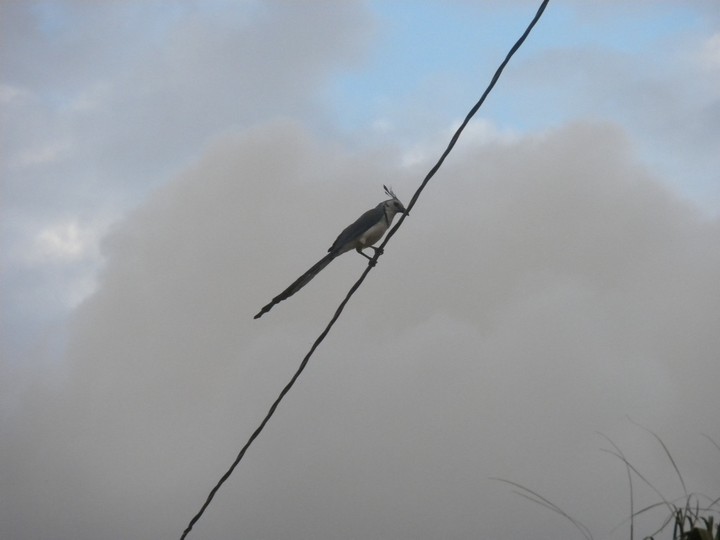
Nicaraguan bluejay
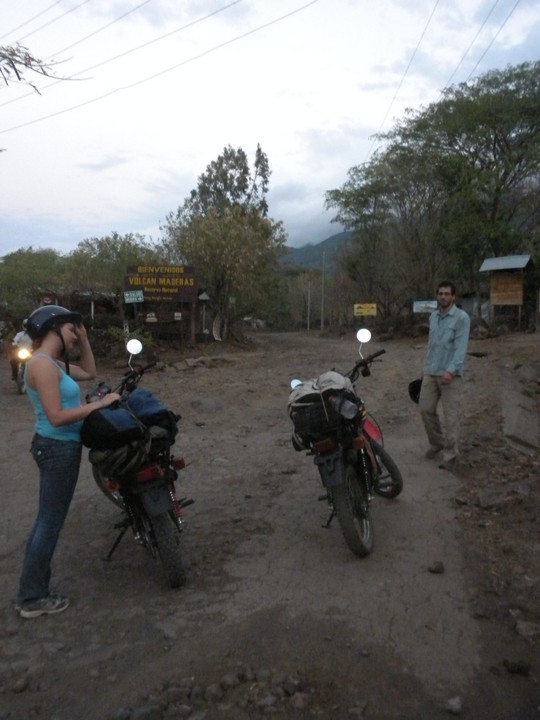
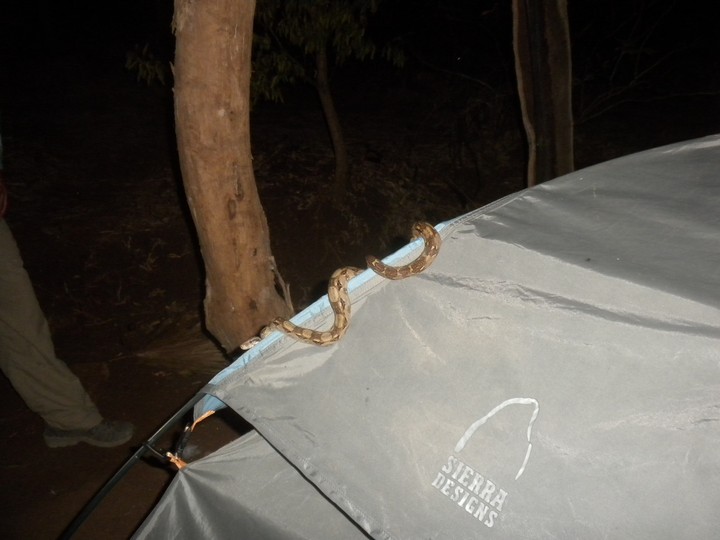
Hostel wildlife
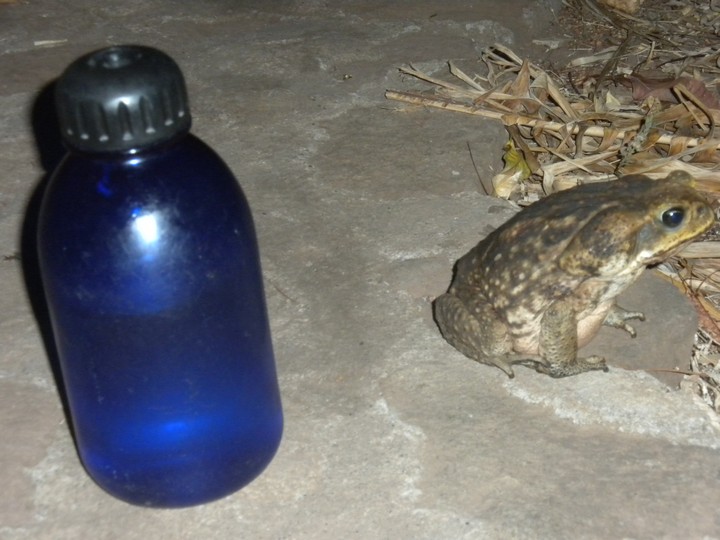
To insure that we'd be able to return our bikes and get to the ferry in time, I had arranged for our guide to meet us at 5:30 the following morning. The guide arrived ten minutes early, but the group was still piecing itself together at ten til six. When we had finally assembled, he led us through a number of private farms (one charged 25 cordobas for crossing its 100m expanse) and up into the rainforest on the slopes of Volcan Madera. The trail was steep and dry for the first section, but gradually transformed into a slippery, undulating mudfest where we found ourselves grappling from root to root in order to keep our footing. All the while, the otherworldly cries of howler monkeys could be heard from the canopy overhead; they always stayed just out of sight, like some cunning predator taunting us and awaiting the opportunity to stealthily swing down and pick us off one by one.
We reached the volcano's rim and made a treacherous descent, assisted by frayed cables and rotting staves, to the lake below. Though we were told that for the past few weeks the whole of the crater had been visible, now the waters were enveloped in thick cloud, and a narrow ribbon of marsh gave way to an infinite white abyss. A few of us stripped down and dove in, but soon found that, for as far as we were willing to venture, the makeup of the lake was only a couple inches of water sitting atop several feet of thick mud. We had long ago exhausted our limited water supplies, so I bounded through the mud, attempting to scoop up the clear water in front of me before the expanding cloud of sediment could sully it.
The guide explained that we would be going down a faster way than that which we had come up. Mike had lost his retainer on the path up, so he and I returned the way we had come while the rest of the group followed the guide down the alternative route. The two of us raced back to where he had first noticed it was missing; a guide was required for this particular trail, and we received quizzical looks from several groups that we passed along the way. We slowed for the appropriate section and I eventually picked out a tiny piece of metal and blue plastic. Much of the lower section was scree and the only way to maintain traction was to keep up a gallop down the slope, braking just enough at each turn to avoid crashing through groves of pointy plants. As we neared the base, the trail bifurcated a dozen or so times and we found ourselves lost in a banana plantation; luckily, Mike had been lost here for some time the night before and was now quite familiar with the lay of the land.
We monkeyed up into our padlocked tree house (Rachel had the key) and got our stuff together; we had plenty of time to shower, check out, and relax since the rest of our group would not arrive for another hour and a half. The girl in the reception had no idea why our guide would've taken the group on the alternative path, given that it ended at another hostel a few miles down the road. My best guess was that he was allied with a taxi service that was conveniently waiting at the outlet of the trail, but they ended up walking the whole way; he did manage to extract $5 extra from them prior to their arrival. When they finally showed up, we quickly disabused them of any illusions of showers or downtime, and rushed them to pack up their stuff and get down to the bikes. We raced back to town in a futile effort to return by the deadline (we had been told a $5/hour fee would be levied per bike); we had all realized it was a lost cause early on, but it seemed as good an excuse as any to go 90km/h down the obstacle-rich highway.
Gas in Nicaragua, and particularly on Ometepe, is not cheap, and fill-ups to replenish the 1 gallon we each used cost about $8. Upon assessing the damage to the bikes, the owner determined that Destiny had to pay $80 in repairs and Matt was responsible for $70; Mike and I got off scot-free. The bus to Altagracia arrived half an hour later and bore us across the island to a central park where minivans waited to drive us 3km over an atrocious road to the port. We each paid 140 cordobas for first-class tickets on the 7PM ferry and went to a nearby café for enchiladas, gallo pinto and batidos. The ferry had an enclosed upper and lower deck, each with a TV, a number of long benches and a few hundred mosquitos. There were a handful of hammocks outside, but rough seas insured that these were repeatedly soaked with spray. We each found a spot on or under a bench and had plenty of time for nearly acceptable sleep on the 11-hour ride to San Carlos.
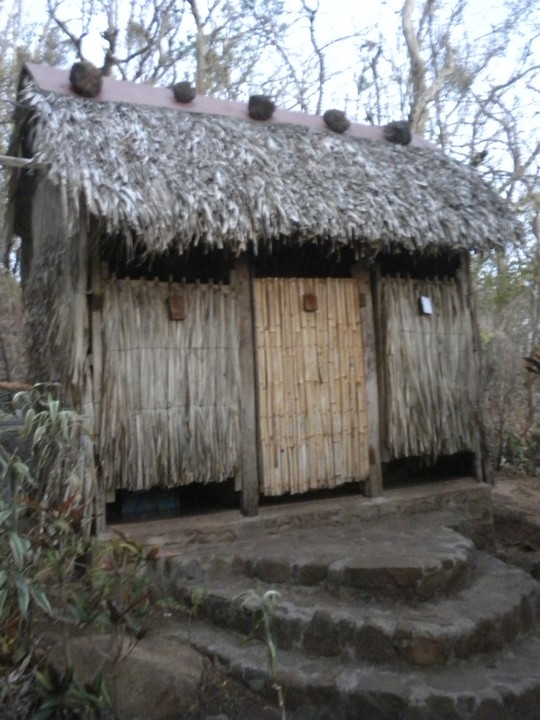
Composting toilets
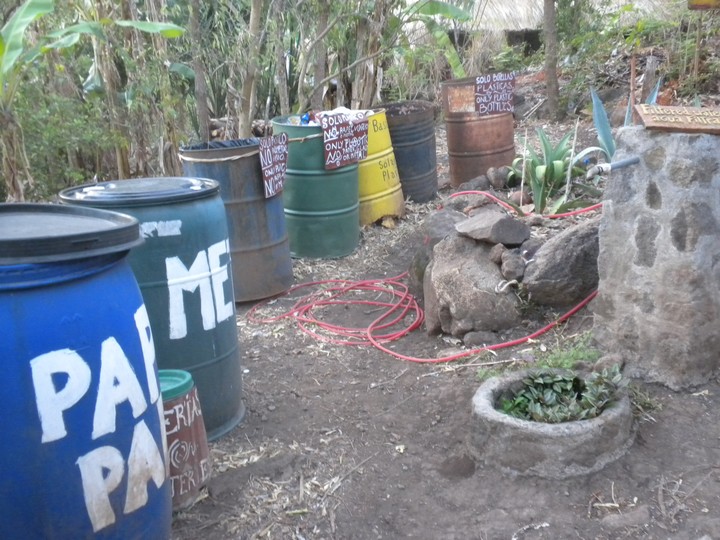
Seven kinds of garbage
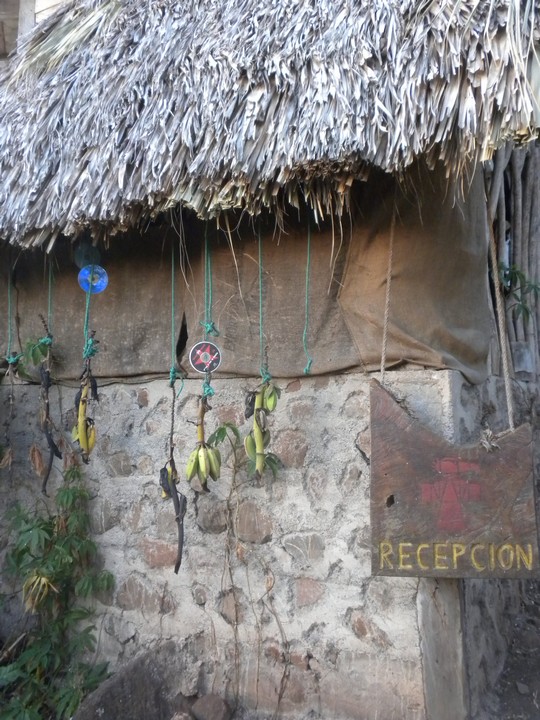
Bananas for the taking
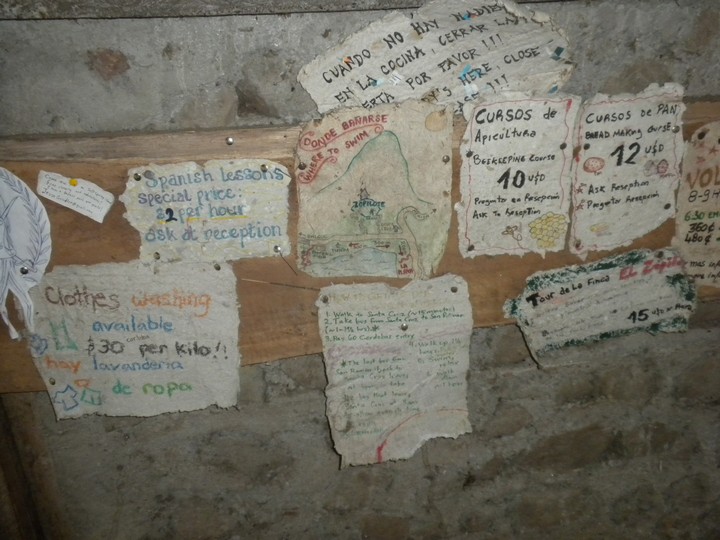
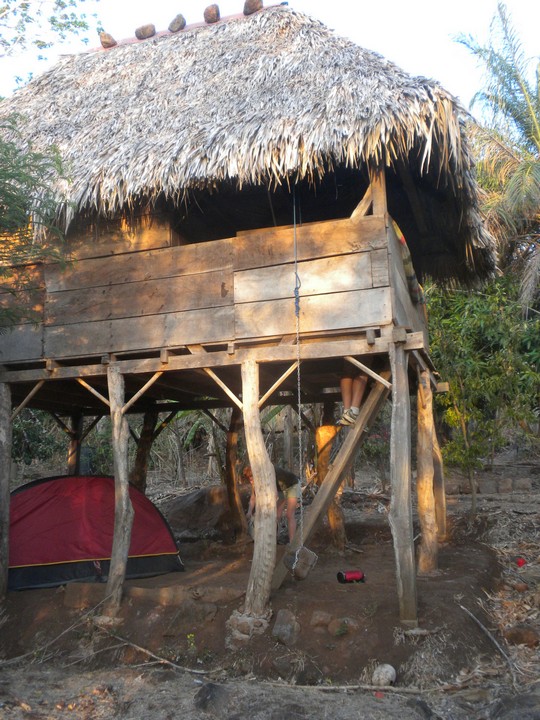
Our treefort room
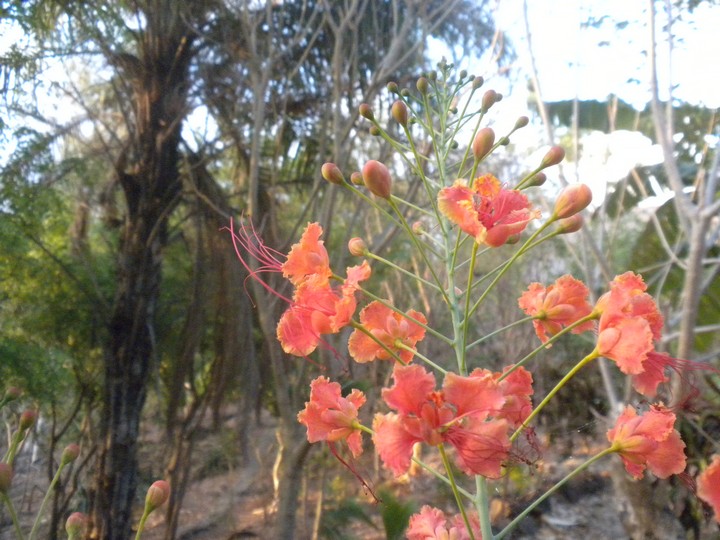
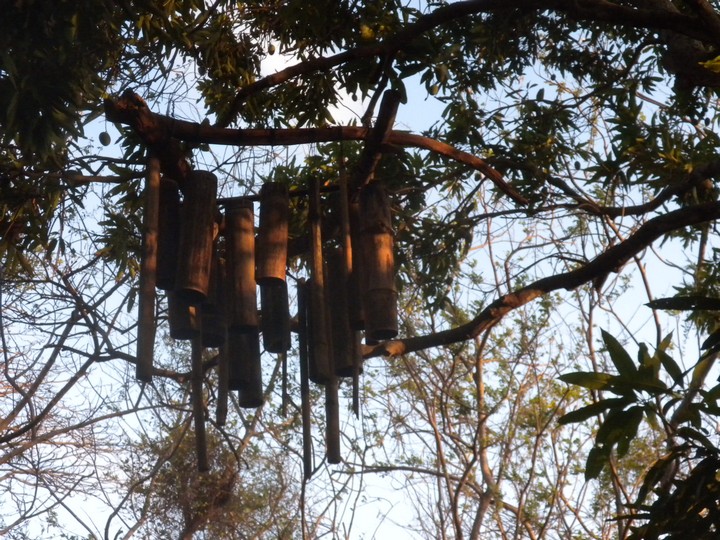
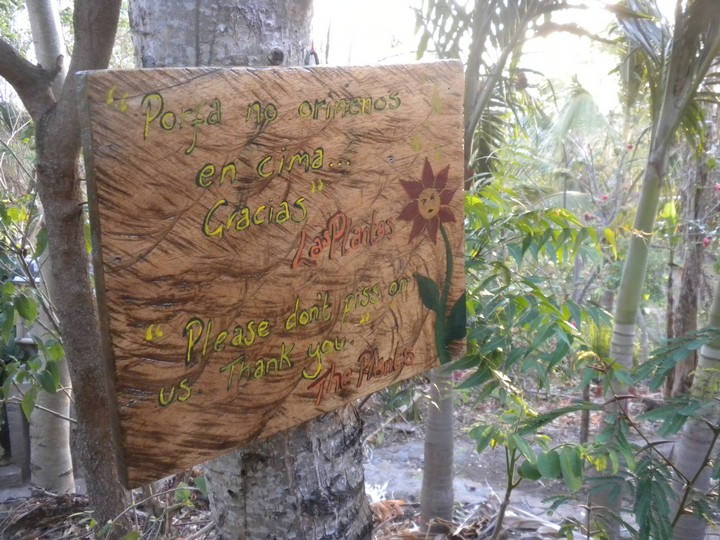

Lookout tower
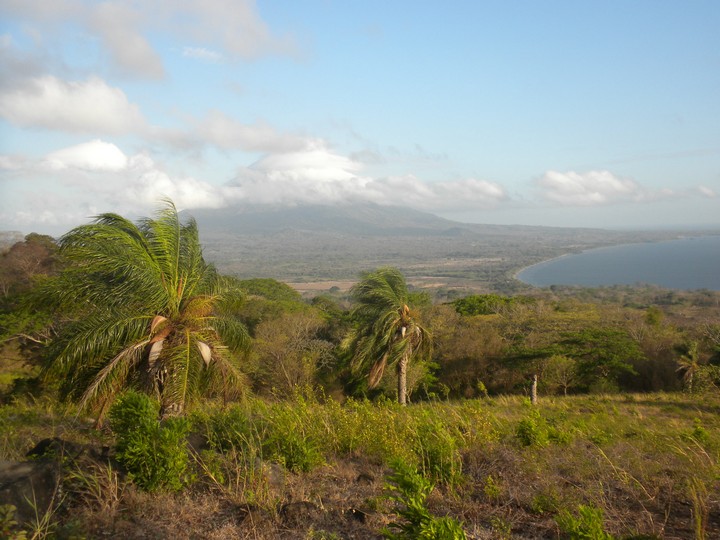
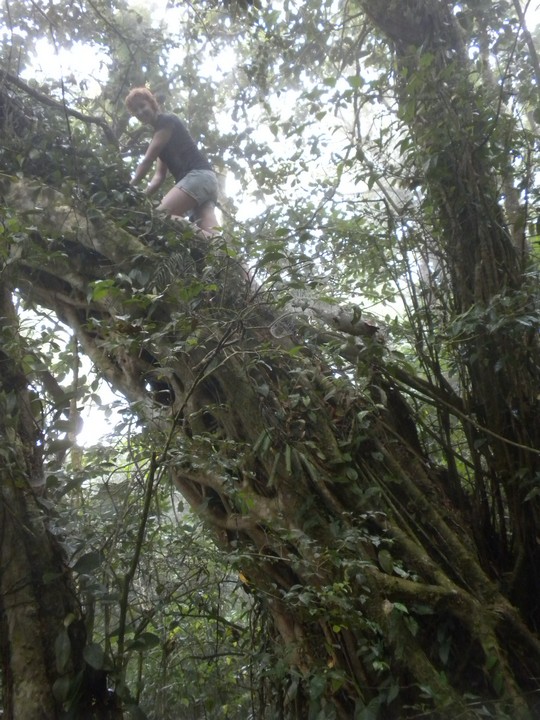
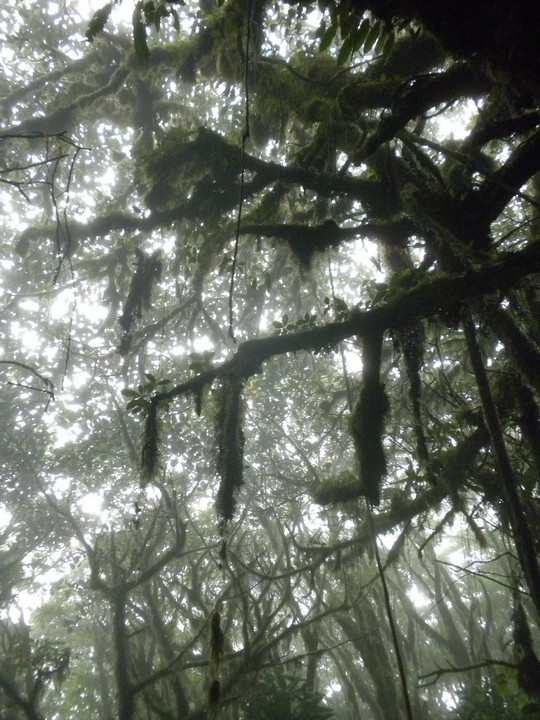
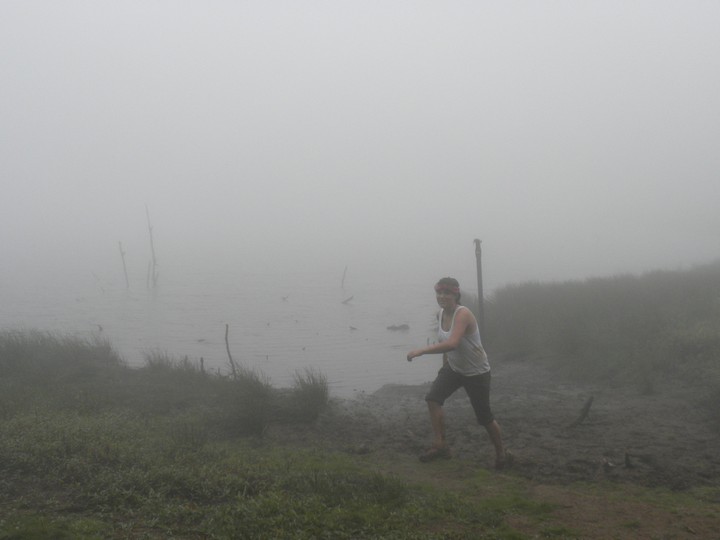
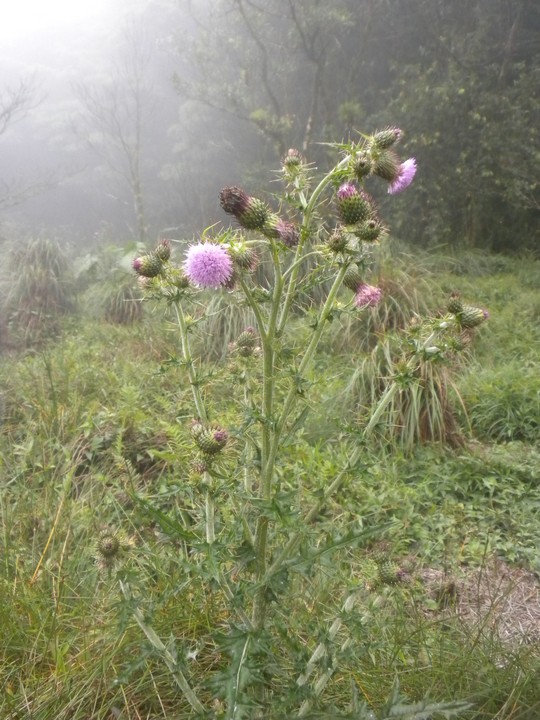

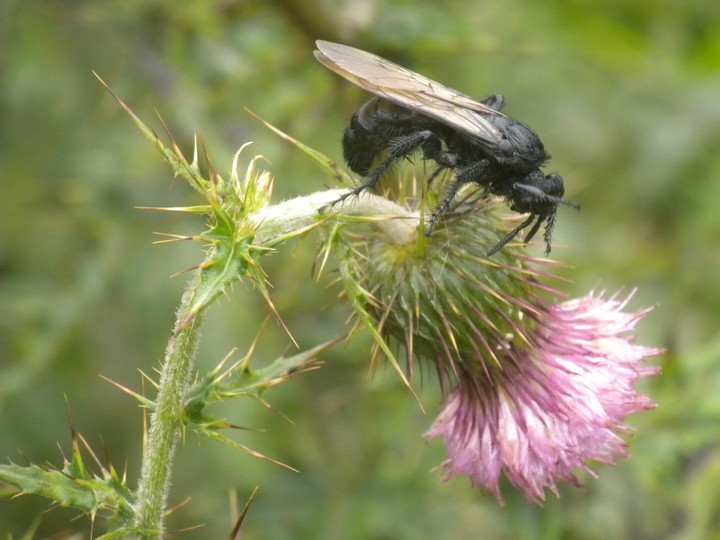
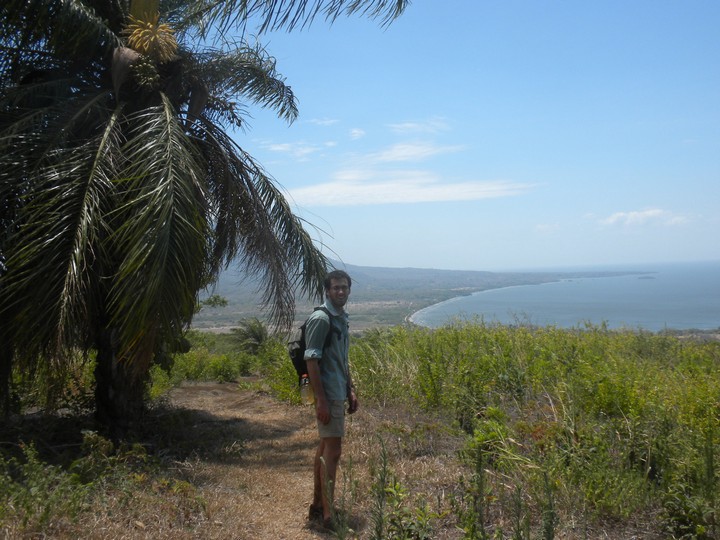
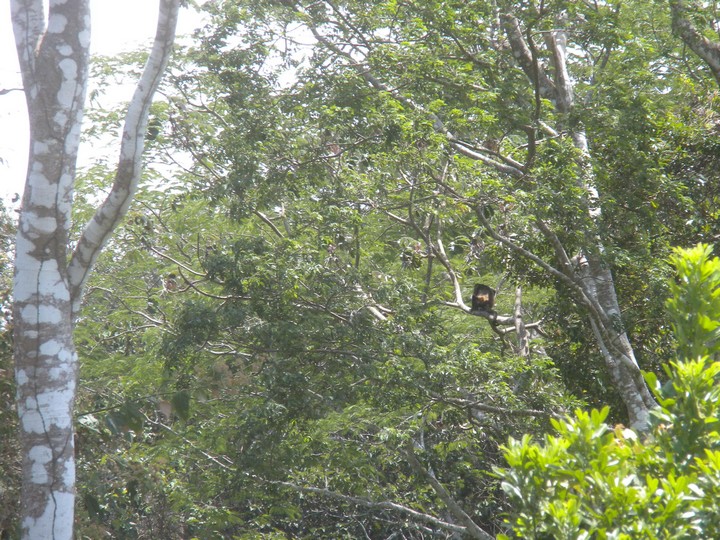
Find the monkey
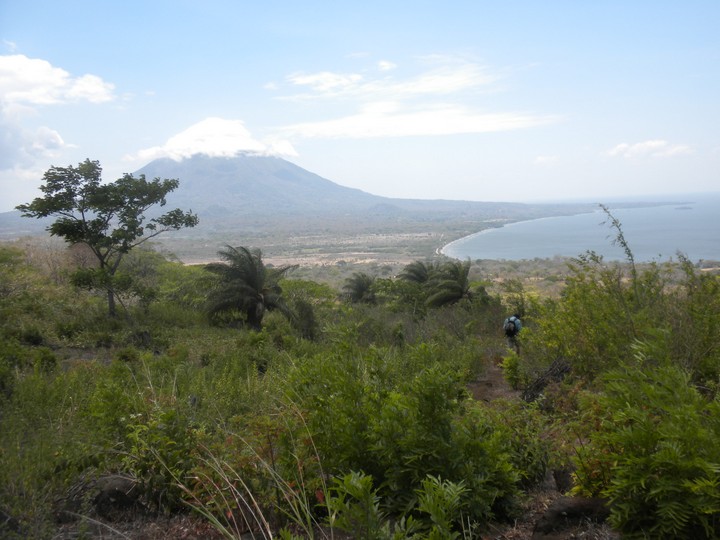
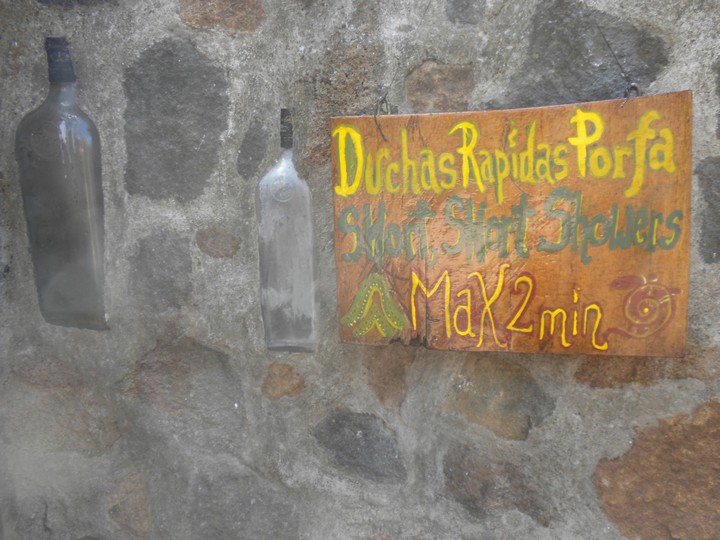
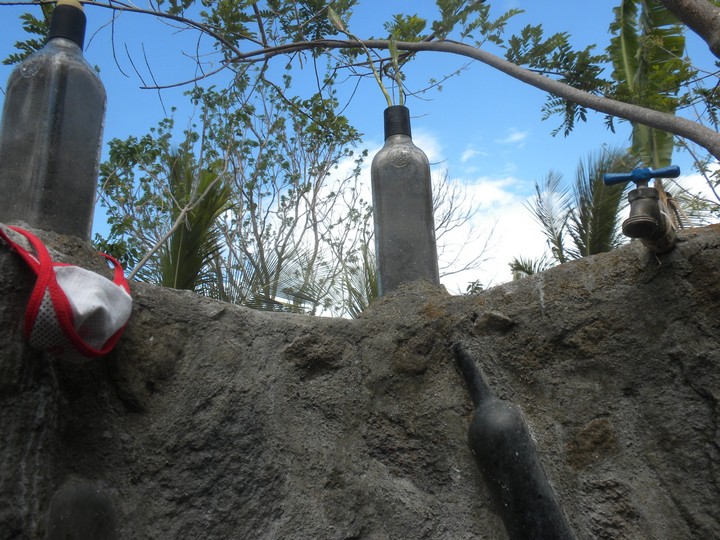
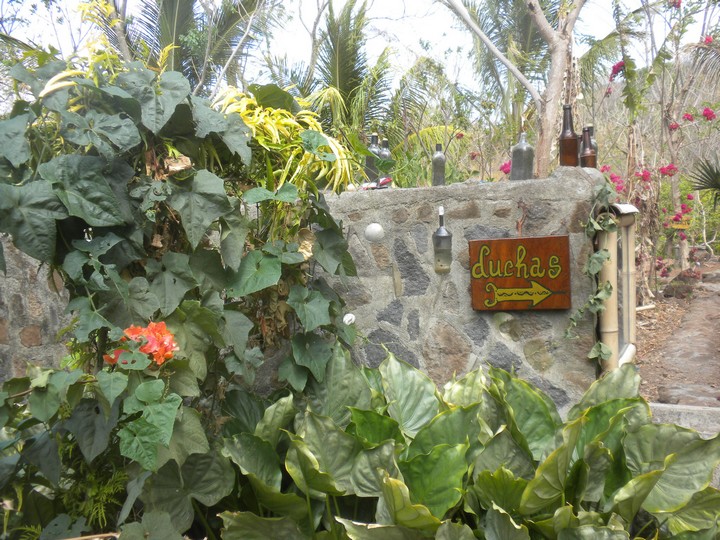
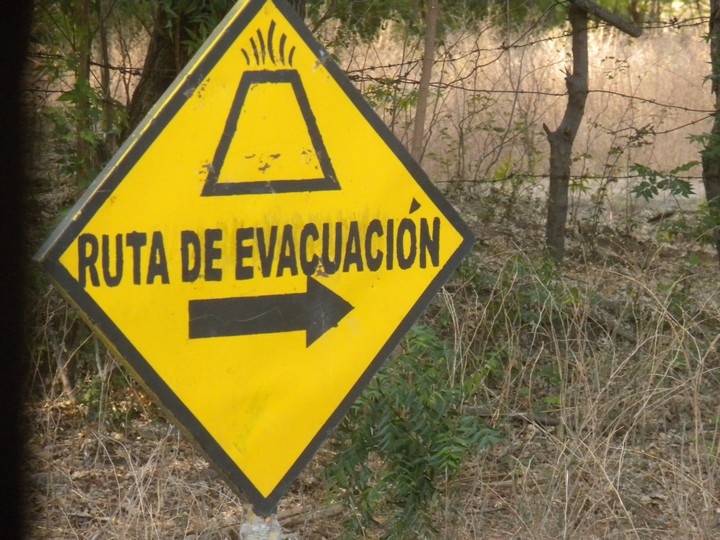
'I dunno where I'm a gonna go when the volcano blows'
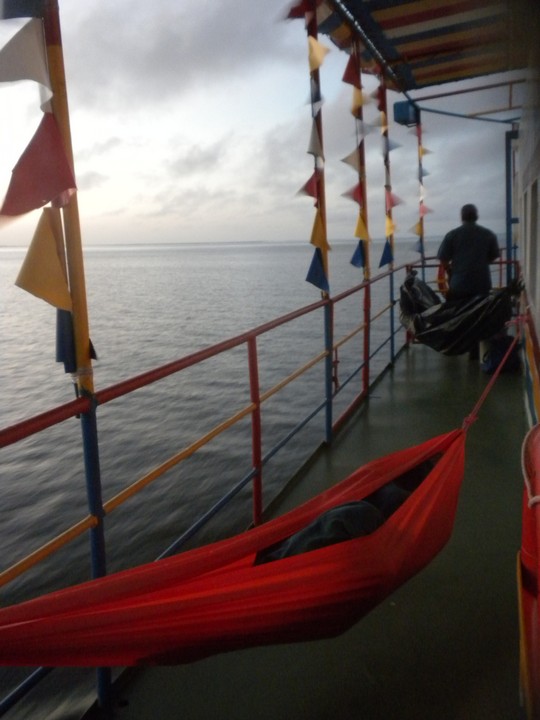
Ferry to San Carlos
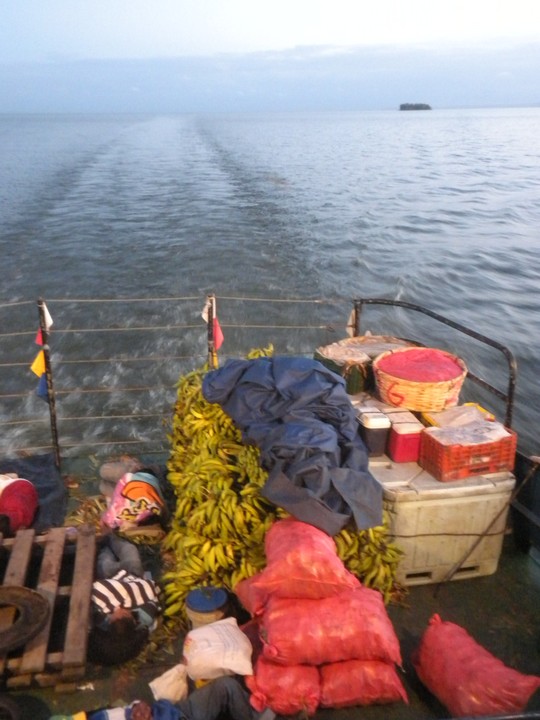
Banana boat
We arrived at the San Carlos docks at 6am, as the first boats down the Rio San Juan were preparing to depart. I was still on the fence as to whether we should go immediately into Costa Rica or first make a detour to some primitive villages nestled deep in the jungle upstream. The boat south was not set to depart until 10:30am, so I tentatively made a plan to put us on one bound for Boca de Sabalos at 8. We went and explored a small, nondescript fort at the top of the hill and then returned to the market for some breakfast at one of a line of identical canteens. The rest of the group tried to order piecemeal and managed bread, eggs, and some queso fresco for 40 cordobas; I simply ordered ‘carne asada' and got a delicious cut of meat, avocado, gallo pinto, maduros, tortillas and cheese for 50. We returned to the port just before 8 but found that the boat upriver was packed to the gills, and while, as always, there was undoubtedly room for one more, seven seemed a bit of a stretch.
We went to the customs house and waited for the officials to go on duty. Matt flirted at length with the girl at the tourist information desk, and we began to doubt that, when the time came, we would be able to separate the two. But when the office opened, they exchanged emails and addresses, she gave him a free can of juice, and they were reluctantly parted. We were charged a $2 tax for leaving Nicaragua and paid $10 for the 2-hour boat ride across the border. We boarded the boat and spent the next hour and a half eating random snacks that vendors brought onboard; a dulce de leche ice cream bar was an excellent investment at only 6 cordobas, but the 10 cordoba potato fruits were distinctly less satisfying. It began to pour just as we pulled away from the dock, and heavy rain flaps detracted from the ‘scenic' quality of our ride, but it soon abated and we were able to take in a number of quaint little stilt houses and spot several troupes of monkeys, along with a colorful assortment of jungle birds.
Pulling up to Los Chiles, we unloaded and got in a long customs line (which seemed to be entirely voluntary, since there was no one to prevent you from walking right past). Halfway through, someone decided that we didn't really need to be there and we left and walked up the street toward town. People were gravitating toward a man sitting at a desk, so we walked up and saw that he was exacting some sort of port tax. We paid 600 colones for each little receipt, but soon found that the passport stampers never even asked for them. There didn't seem to be all that much to do in Los Chiles; we went to a bank where I extracted $200 in colones and sold 10,000 to each in the group. We then followed a little girl, who we somehow surmised must be going to the bus station, but wound up at her school instead. The bus to Upala wasn't leaving for another 4 hours, so we went to a small café next door. Everyone got strawberry milkshakes for 800, and a few in the group ordered pasta alfredo or a hamburger for 2000; the pasta sauce was disturbingly similar to the pouches of powder they sell at Walmart and probably had enough MSG packed in to satiate a Chinese family for a month.
Mike had decided that it would make the most sense to forget about the bus and simply hitchhike to Upala. His argument was that most drivers who plied that road would likely be in pickup trucks that could take seven people just as easily as one or two, but I was wary, knowing that such a gaggle of Americans would undoubtedly introduce a critical extra moment of hesitation that would greatly reduce the odds of getting such a ride. In the end, Mike and Rachel took off walking down the road and the rest of us hit up an Internet café and returned to the station to await the bus.
The primary function of our bus seemed to be to drop off school children, and it frequently turned off the main road and made big loops through farmland. When we finally arrived in Upala around 7:30, Mike and Rachel met us at the bus station, a liter of beer in one hand, having already been there for 3 hours. They had secured a double room and, not wanting to tip off the management, ferried us in one-by-one. After Kelly, Destiny and I were in, Mike reported that the manager was just outside and the rest were going to walk around a bit. They returned two hours later, having gone for dinner and drinks; in his usual style, Mike had fomented something of a mutiny, and the group returned resolute that they were going to sleep in, then hitchhike to a random waterfall. We turned in around 10; Mike and Rachel spread out on their deluxe king-size mattress and the rest of us curled up at assorted odd angles, atop piles of dirty clothes and towels on the floor.
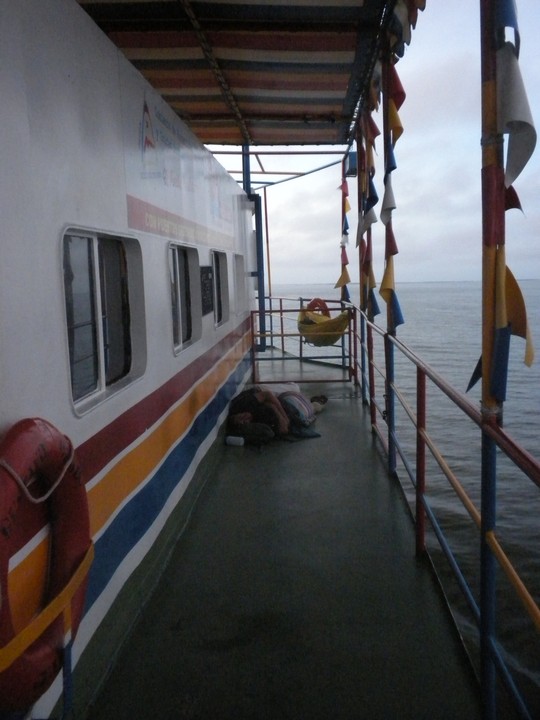
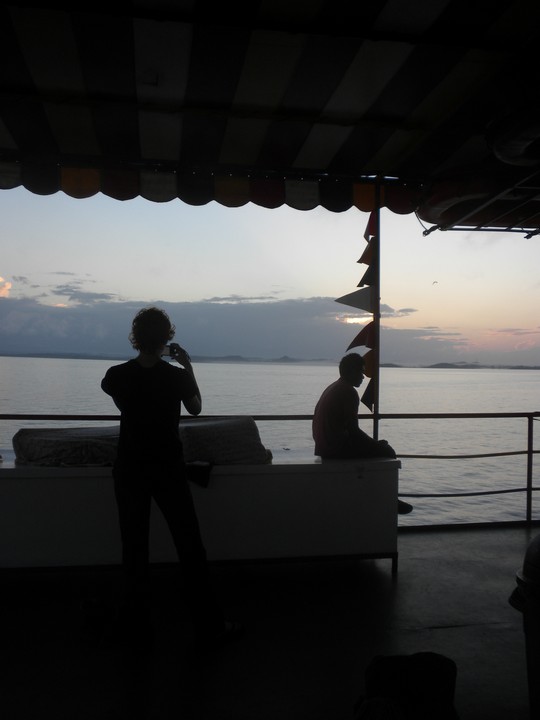
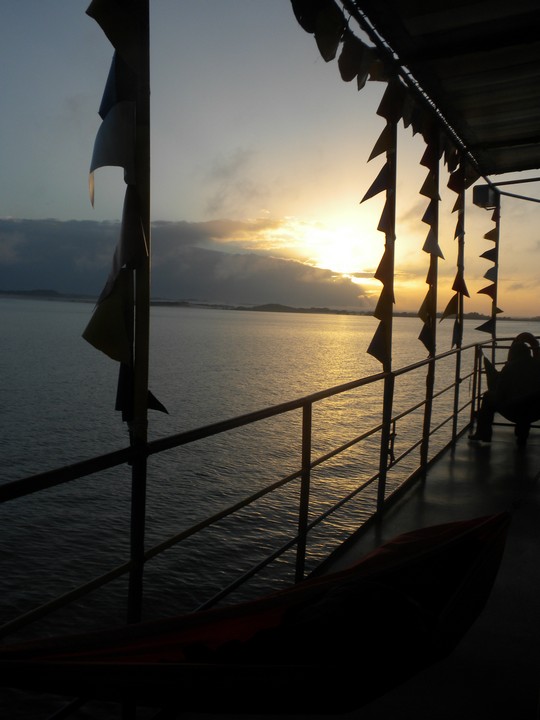
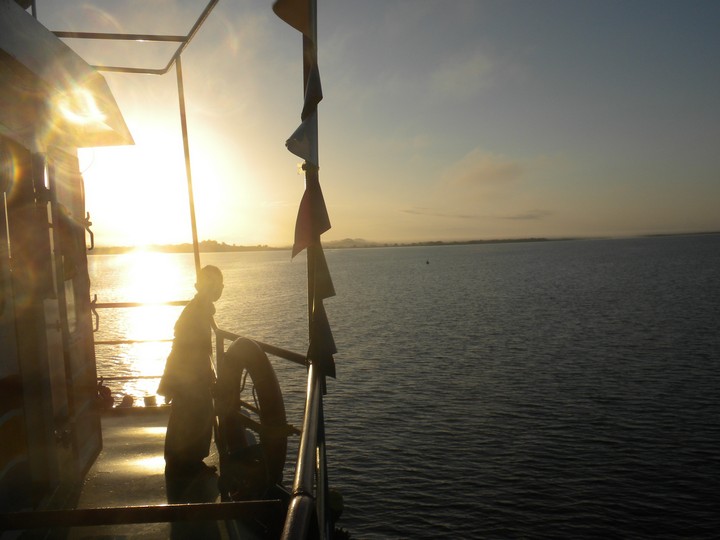
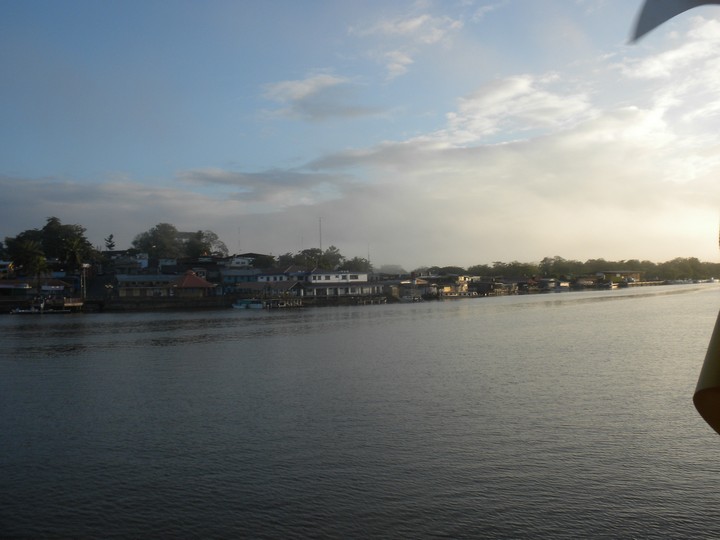
San Carlos
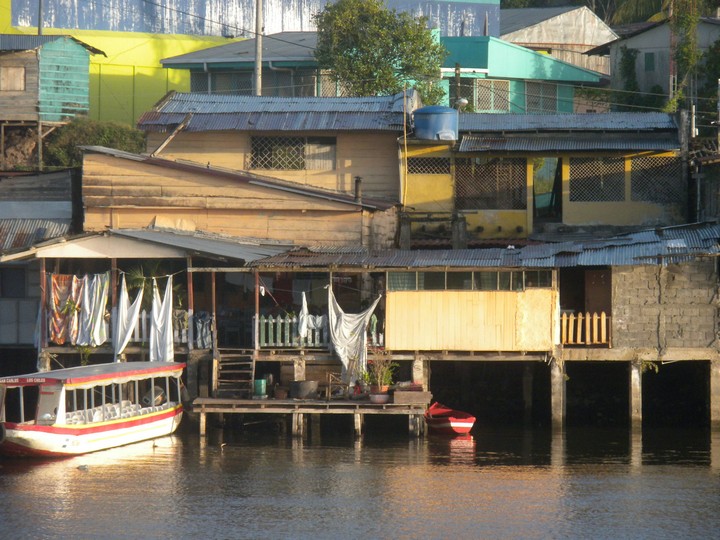
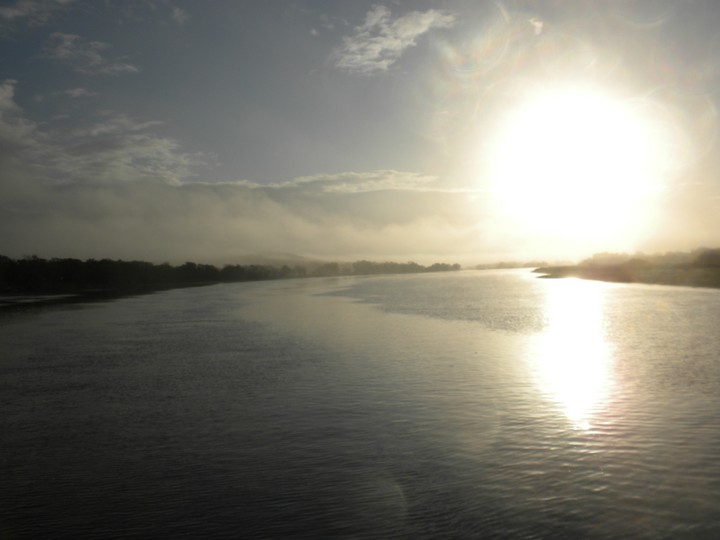
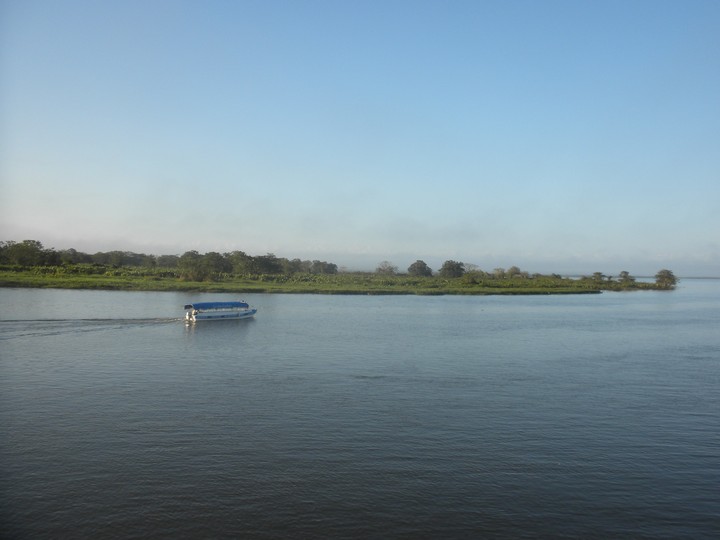
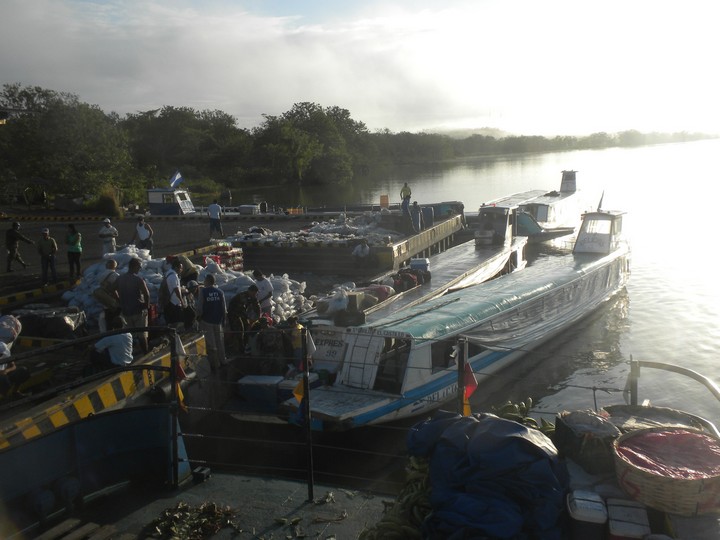
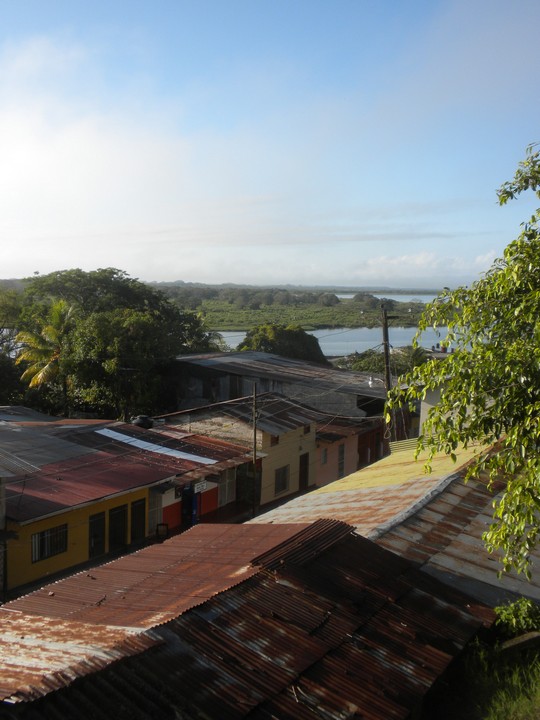
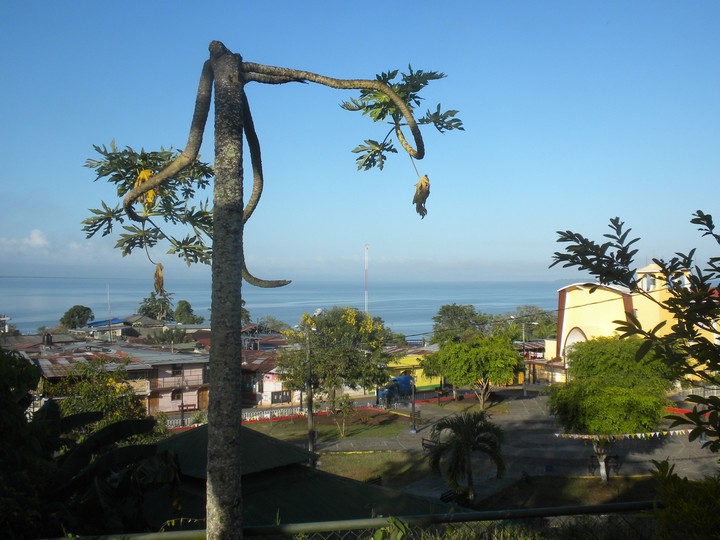
I got up around 5 and began wandering around town; even in the central city streets, the unsettling cries of howler monkeys could be heard from all directions. Around six, I returned to wake up the group, and we ventured to a nearby Soda which was drumming up business by blasting uplifting Christian music out onto the silent streets. The place was cafeteria-style, and it seemed that, regardless of what we ordered, the final price came out to 1800 colones; I got some chicken, gallo pinto, maduros and a tall glass of rice pineapple drink.
The only directions we had for the waterfall were that it was on the Rio Celeste some 10km from town. We crossed the bridge to the highway and immediately flagged down a passing bus that would purportedly take us closer to the river; Mike and Rachel, to maintain their integrity, declined the ride. After about 10km without stopping to pick up a single additional passenger, the bus reached the Colonia Puntarenas junction and dropped us off; our ride turned out to be a special handicapped bus and didn't charge us anything. We walked for a time and attempted to flag down several trucks that passed, but each was full of cows. We asked for directions and found that the turnoff for the river was 7km further down the road in the tiny village of Karina. After a little more walking, we caught a bus that charged us around 400 colones and took us about 15km further before dropping us at an unsigned gravel road. We started walking up this and shortly learned that it was a few kilometers to the Rio Celeste bridge, which was closed to vehicles but open to foot traffic; we had surmised that this was where the waterfall must be. Along our walk, we found a crate of pineapples that a truck had dropped and picked out a few small ones that hadn't cracked open; Matt used his teeth to burrow through the thick, spiny outer husk to get to the acridly sweet meat and juices inside.
We reached the river, crossed the bright blue waters on a narrow walkway cobbled together with a big log and some planks, and briefly looked up and downstream for the falls. We asked a farmer just beyond the crossing and learned that it was still another kilometer to a turnoff, a further 3km up a steep mountain road, and a few more kilometers past that on trails. We suddenly felt very tired. We tried to pick out local residents who might be willing to drive us up the mountain for a small fee. One house advertised cane juice and we stopped to procure two small satchets of frozen juice for 200 colones each; the real reason we had stopped was to use the juice purchase as a segue into asking them to give us a ride in their van, but this fell through. It was a long while before my juice had melted enough to be drunk, but in the mean time, it proved to be hugely refreshing to rub it all over my body. We had begun to wonder whether Mike and Rachel had given up and opted to go somewhere else, but after walking uphill for another hour, a truck with our two lost gringos passed us by; we attempted to flag it down but the driver only made an indiscernible gesture and kept on going. Shortly after this, a poorly marked turnoff led back into the forest to the "Arbol de La Paz"; this was an absolutely massive tree and, to some degree, it mollified the sting of the missed ride.
We stopped at a restaurant advertising fried tilapia, and got some pineapple juice and sampled another drink with little sweet seeds suspended throughout. After another half hour, we finally reached the entrance to the park, which turned out to be none other than the Volcan Tenorio National Park, and hardly the little-known local secret we were expecting. The admission price was a ludicrous $10; the Spanish speakers in the group made a drawn-out, impassioned plea for some sort of student discount or anything that would reduce the rate to something nearer the much more reasonable Tico price of 1500 colones. But what finally effected a change in the official's heart was when the situation was translated to English, causing Destiny to dramatically collapsed in a nearby chair, exclaiming ‘No tengo dinero!'. He pulled out a bundle of 800 colones tickets and instructed us that we must return out the same entrance and that, if anyone asked, we were actually student volunteers working in a Costa Rican park for the summer. He gave us a crudely drawn map that explained how to reach the falls, thermal pools, and other attractions.
We hiked up a rough, muddy trail through the heavily canopied forest, the colorful songs of myriad bird species sounding from every direction. We reached the thermal pools just as Mike and Rachel were approaching from the other direction, and all rested their aching muscles for a time in the hot, soothing waters. Mike explained that we needed to go to the end of the current trail and go back on the other side of the river, crossing again to the original side at the waterfall. We followed these directions and eventually reached the falls. Here, a group of about thirty policemen were hanging out, picnicking and taking group pictures, all in full uniform. We couldn't find a safe crossing so we continued down a trail on the same side. We exited through a different entrance, used the provided showers to wash the mud off, and set out on the gravel road that would supposedly take us to Highway 6, which would be our outlet to the rest of the country. After a few hundred meters, we stopped to ask a farmer for directions; he immediately dropped his tools and volunteered to guide us to the appropriate road. Along the route, he explained that his family owned all the farms in the area, for as far as the eye could see, and took us through a couple of his fields to show us the crops they produced. He left us at a turnoff and explained that we need only follow that road for 30 minutes to get to the highway. We were quite relieved that it was so short a journey, since the road was still under construction and was unlikely to see any traffic. We had been walking for about 20 minutes along the steep, muddy trail, when a construction truck stopped halfway up a hill to pick us up. It was another 25 minutes of driving at a good clip before we reached the highway; it was a very good thing that we had caught this ride.
Reaching Bijagua, we decided we had no choice but to split into two groups, hitchhike to the border, and meet up at Playa Maderas on the other side. Since Carolanne and I had the greatest proficiency in Spanish, and Matt and I were the most masculine in the group, the only logical split was to pair up Matt and Carolanne and send Destiny and Kelly with me. To give us a head start, Matt and Carolanne ducked into a convenience store, and the three of us who remained immediately caught a ride in a small sedan that took us all the way to Liberia. From there, we took a bus to La Cruz. We debated whether to continue on to the border at Penas Blancas, but since it was already dark, and there would be no buses on the other side, we decided it would likely be a poor choice. Upon reaching the ‘small, rather desperate' town of La Cruz, we noticed music and lights rising from a few blocks over. We had arrived in the midst of a rollicking carnival, which housed many rides, carnival games, candy apples and assorted meats-on-a-stick, and a temporary bull ring. We had missed the bullfight by about five minutes, but by employing my red boardshorts and Destiny's expertise at bull impersonation, we were able to pretty accurately reenact it. Destiny and Kelly bought tickets for 600 colones and rode the ‘El Vortex' swingset.
Returning to the center of town, we found a hotel and asked the elderly couple for the cheapest room they had. They showed us a double bed in what appeared to be a closet, and informed us that it would be 3500 colones per person; I said that we might look around a bit, and the woman led us to a much larger room with 2 beds and a TV, and gave us a new price of 2500 colones each. The couple spent the next half hour explaining how to use the locks and light switches, then we went down to the heladeria for some ice cream cones, and turned in shortly after 9.
The next day, we would discover that Matt and Carolanne had had similar success hitchhiking, but had pushed on and reached the border around 9. From there, they found they had no choice but to take a taxi for $30 to San Juan del Sur. The beach town turned out to be pretty much on par with Daytona Beach, and was packed to the brim with drunken college kids, skimpy swimsuits, and other unsavory elements. They got some food and took another $20 taxi just up the road to Playa Maderas where they managed to get a room in a shack on the beach.
Several days later, while waiting for our flight at the airport, we would learn that Mike and Rachel had exited the park through the first entrance and had hitchhiked back the way they had come to Upala. By the time they reached that town, it was already dark so they got a room in the same hotel.
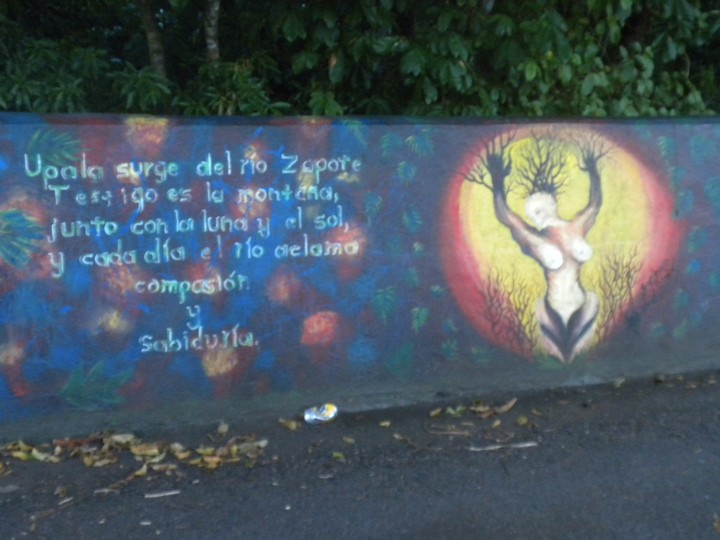
Upala
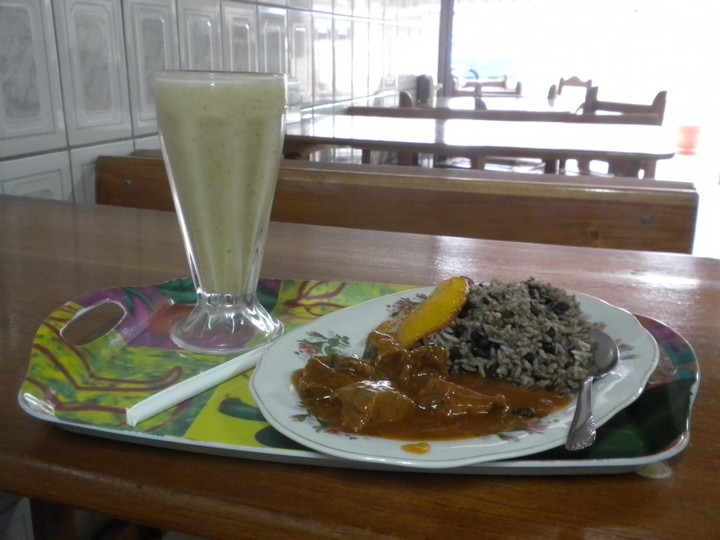
Cafeteria breakfast

Hitchhiking with 5 people - not terribly effective


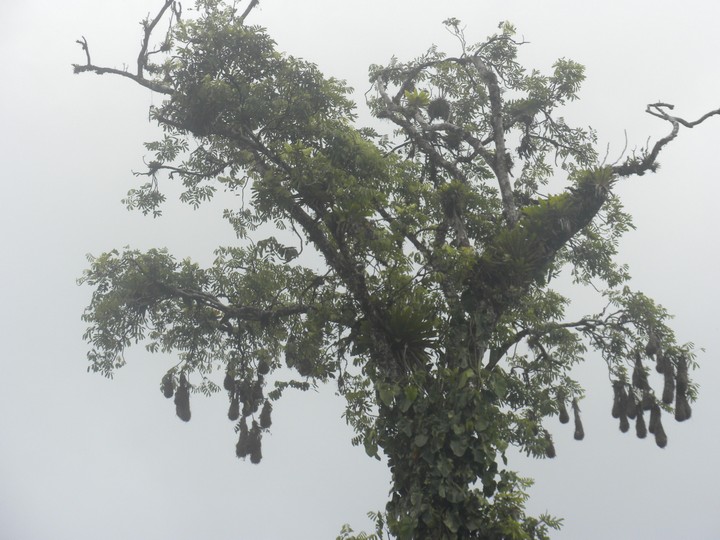
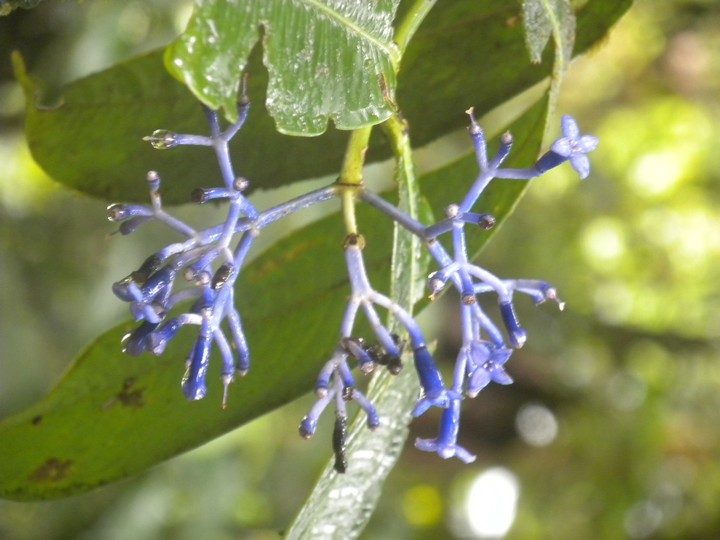
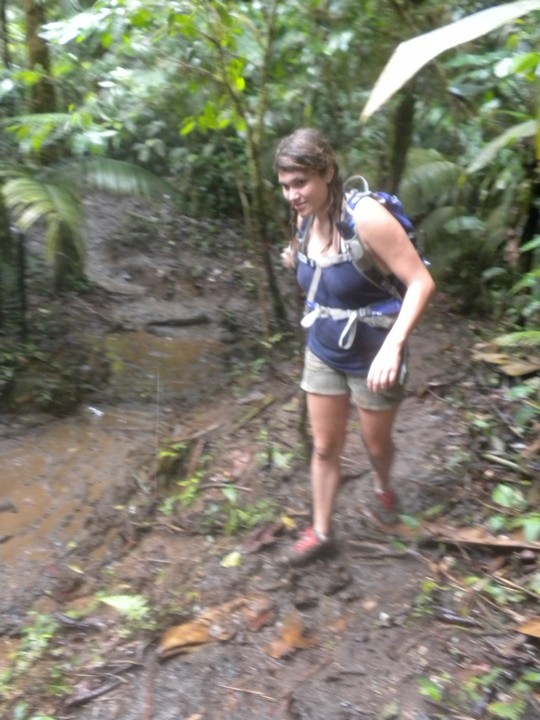
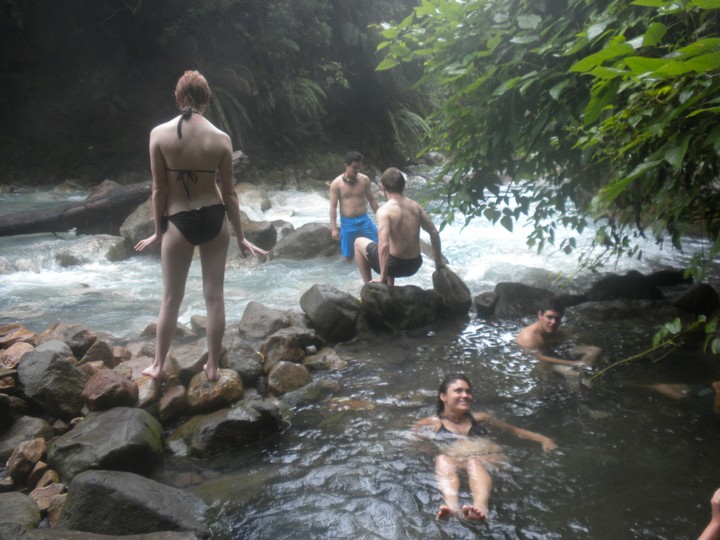
Thermal pools
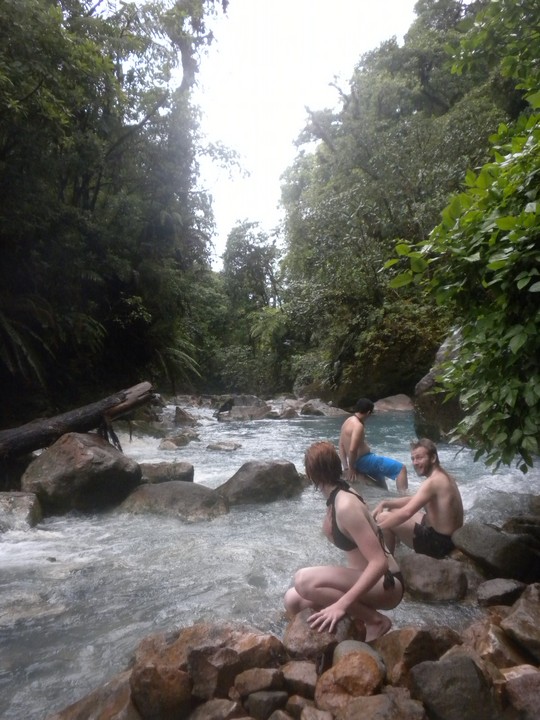
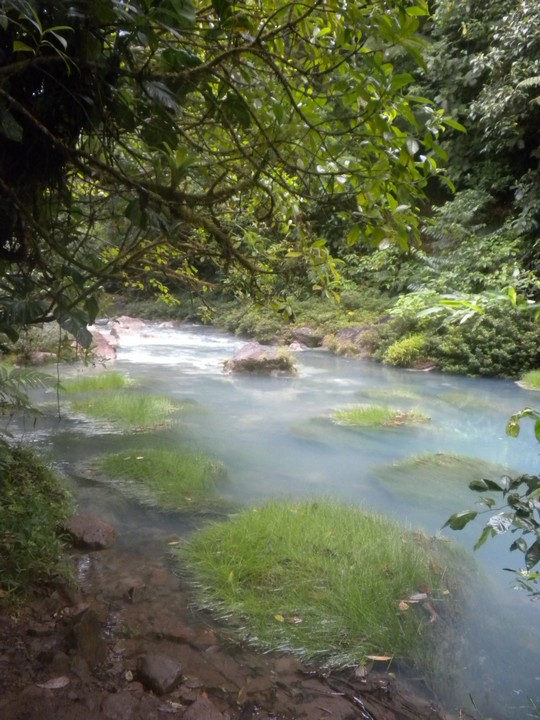


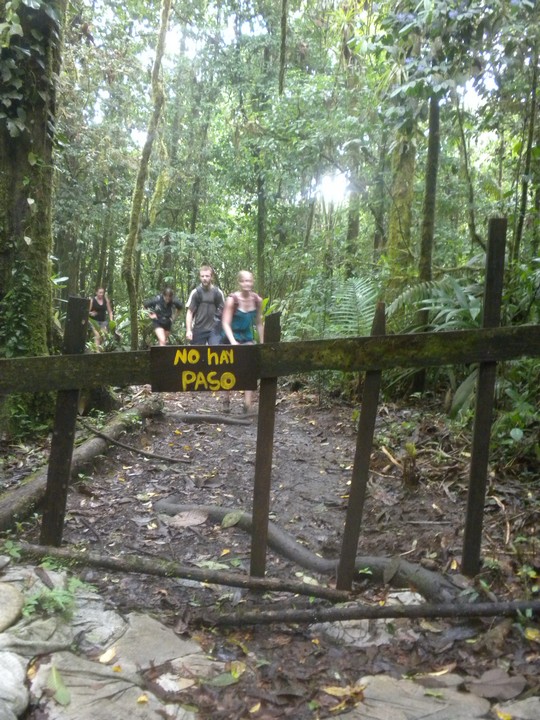
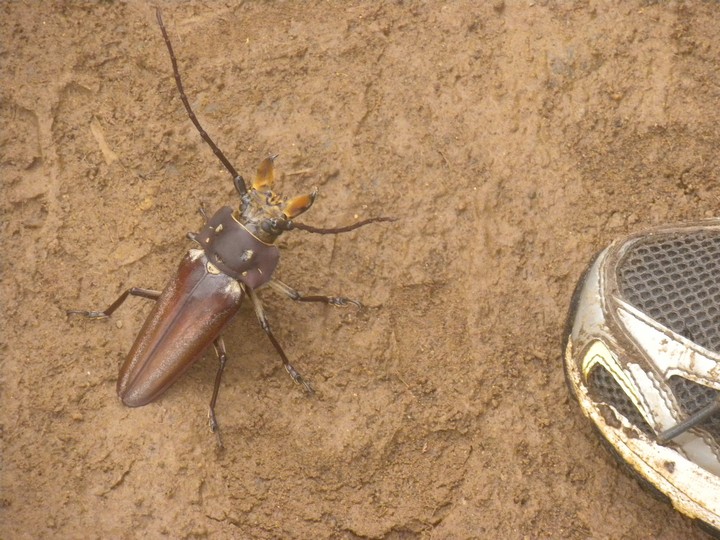
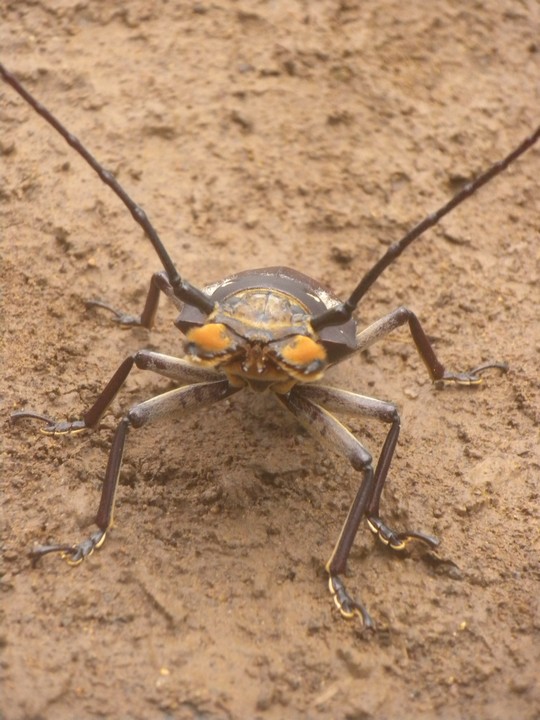
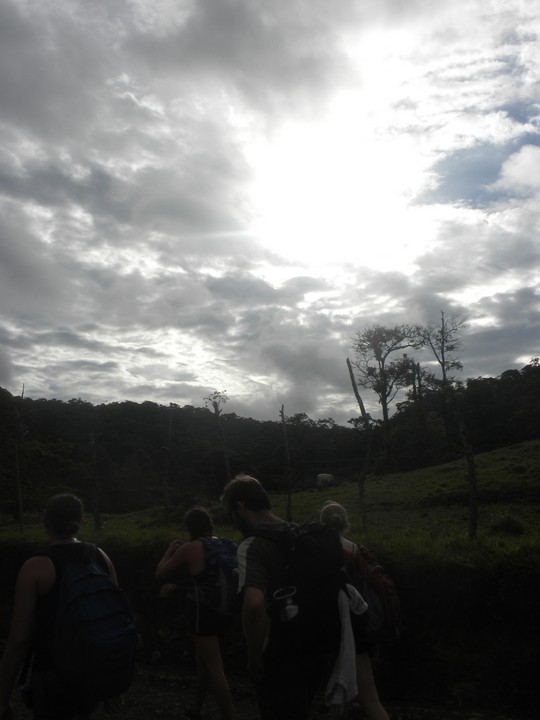
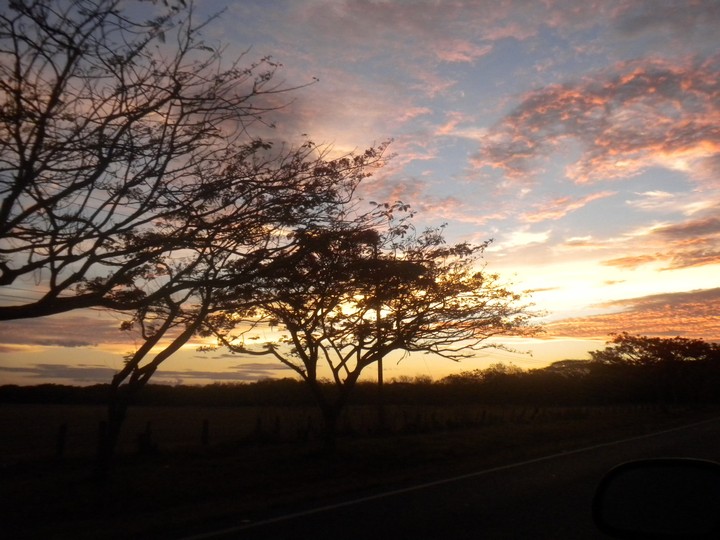
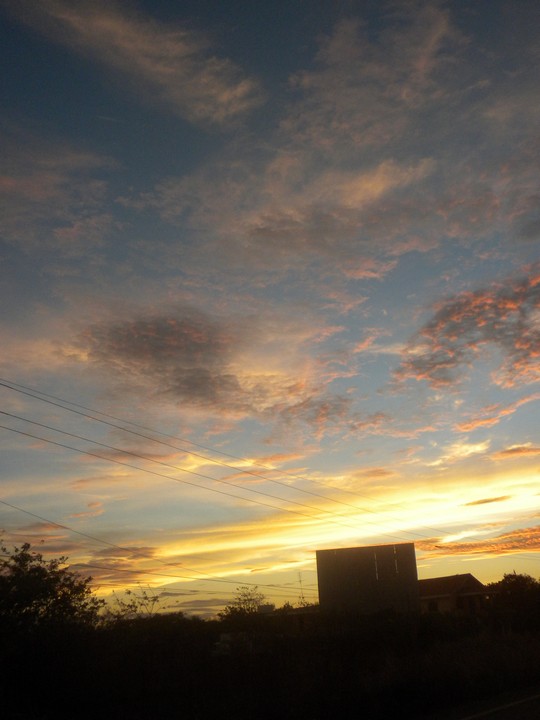
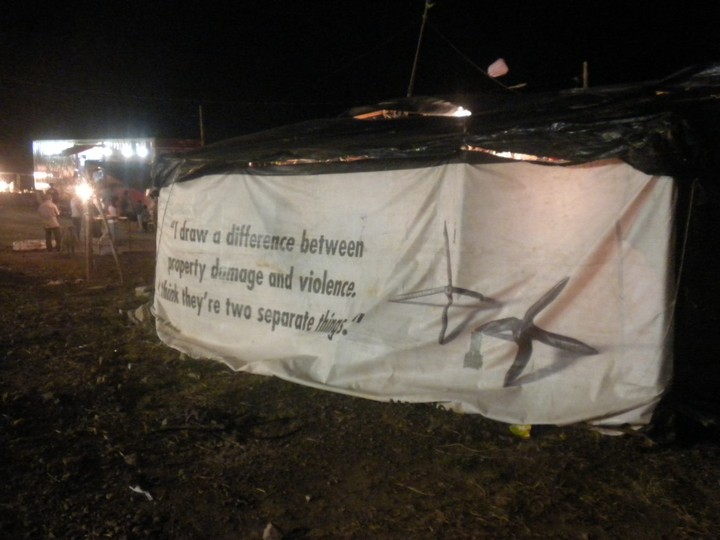
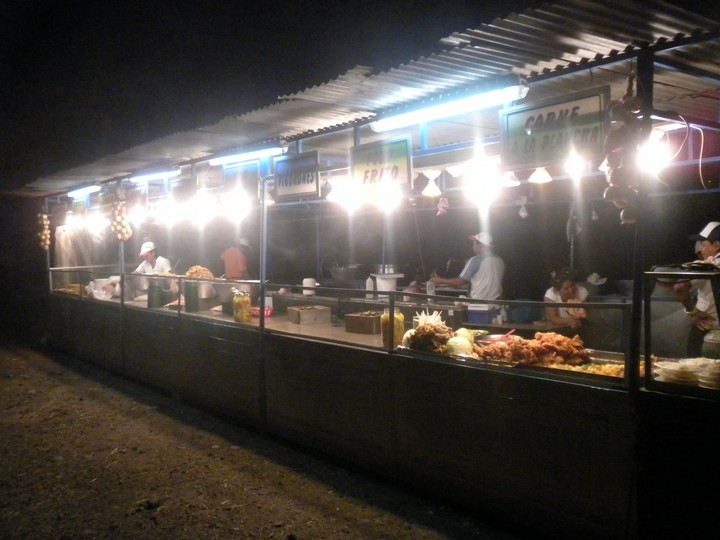
Carnival food
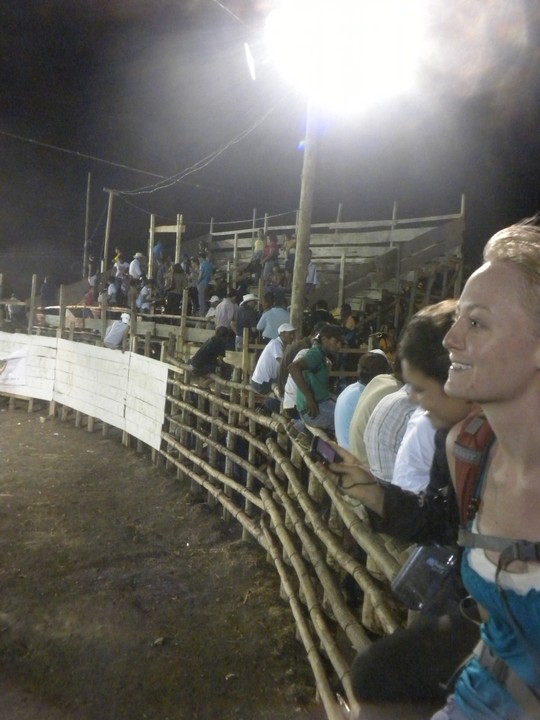
Bull ring
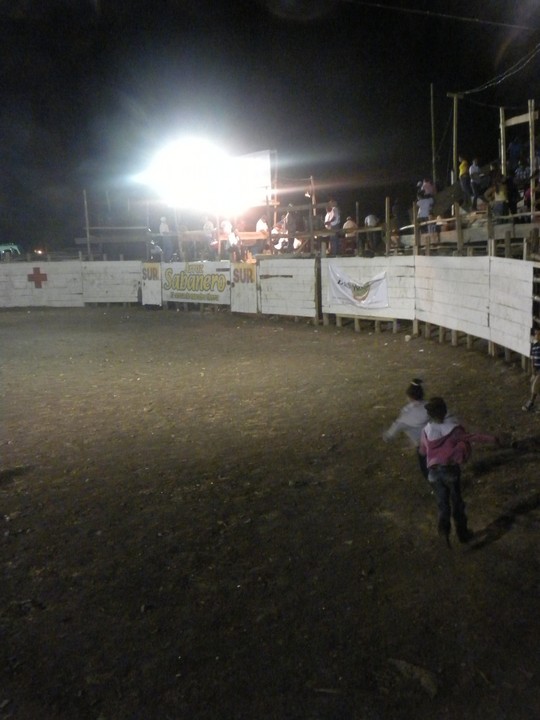
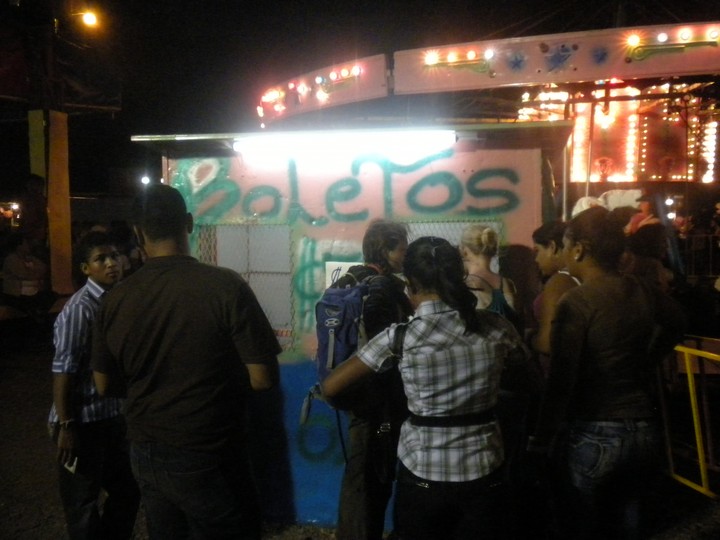
Tickets
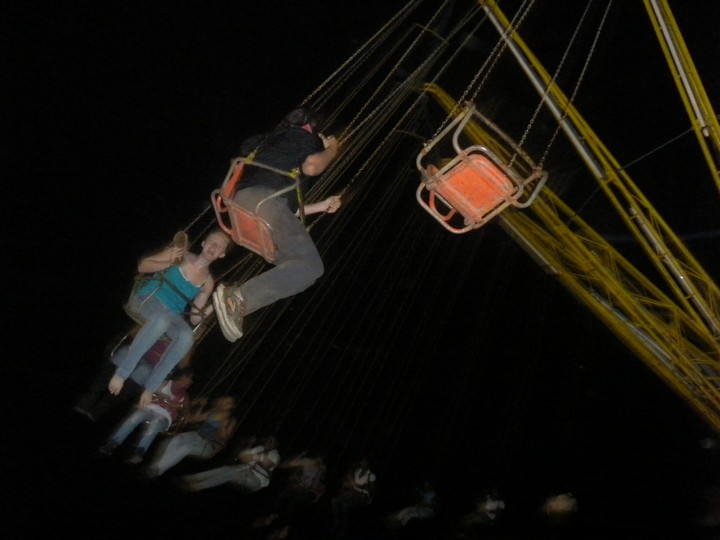
'El Vortex'

Heladeria 'The Floyd'
I was awoken shortly before 5 by the sounds of a distant marching band. Thinking the festival was starting up again, I got up to seek it out. After following the sound for some time, I discovered that it was in fact a band sitting in the bed of the pickup, driving through each neighborhood, insuring that no one had the gall to sleep past dawn. The Islamic call to prayer is pretty effective at getting you up in the morning, but a minaret loudspeaker can't really compete with a tuba blasting a marching hymn directly through your window.
The others rose around 6 and we walked out to the highway to begin looking for rides to the border. This particular stretch of the InterAmericana wasn't terribly conducive to hitchhiking but we eventually found a bus going the right way. Passing through Costa Rican customs without a hitch, the Nicaraguan official took our passports and demanded $12 per person. Since this was vastly higher than the $5 I was expecting, I presumed it was some sort of extortion, and left for a while to try to think of some argument to get around it. Finding none and knowing of no way to leave the country without that stamp, I soon relented and forked over the cash. We paid $1 more to leave the border zone and then started walking along an endless line of semis. We flagged down the occasional car, but each turned out to be a taxi (these, incidentally, look exactly like every other car on the road); one such taxi volunteered to take us to the turnoff for free. We passed right through the center of a massive wind farm, the hundred-foot blades dramatically slicing through the air overhead. The driver dropped us in the town of La Virgen. Beach traffic was surprisingly sparse, but after some minutes, a Hilux stopped and let us jump in the back. We got to the turnoff for the northern beaches and jumped out, not understanding that our ride was, in fact, going further in the desired direction. An American picked us up and drove us a little further up the road to one of the mega-resorts. From there, a massive construction truck carried us the rest of the way to the beach. We stopped in at a small hostel on the beach for lunch. To our great surprise, we discovered Matt and Carolanne sitting in one corner; they were, at that moment, debating how long they planned to wait for us. I got some grilled fish and a batido and the girls ordered hamburgers and a couple of very rum-heavy pina coladas. We debated whether to rent a surfboard for the day, but decided in the end to take a quick dip and try to climb some rocks at the far end of the cove. The tide was not conducive to reaching the rocks; a roaring channel feeding into a sea cave cut us off from the far side of the headlands. We returned to the beach shack and relaxed for a bit before deciding to head over to Granada for the evening.
Carolanne was ready before the others, so the two of us began hitchhiking back the way we had come. Our first ride was a hippie couple that had us hang on to the ladder on the back of their van and took us up to the next big intersection. From there, a local real estate agent took us out to the highway. It was some time before anyone else offered a ride, but a taxi driver stopped and volunteered to take us to Rivas for the rock-bottom price of $3. He had apparently seen my group at the border the previous day and, believing that Carolanne was actually Destiny, asked what had become of our blonde friend.
From Rivas, it was a simple matter to catch a bus onward to Granada. Two clowns, in full face-paint and clown pants, boarded the bus from a random stop in the middle of nowhere and proceeded to do a twenty-minute comedy sketch which was largely unintelligible for us. Our first choice of hotels had disappeared since the publication of Matt's guidebook, so we headed for the backup, the Bearded Monkey Hostel. This place had dorm beds for $5; coffee and internet were free, but filtered water cost 10 cordobas for a liter. Just before sunset, we headed over to an abandoned hospital on the edge of town; this was highly atmospheric and seemed to be patronized largely by strolling families and well-behaved teenagers, and not the usual assortment of drugged-out homeless guys and hoodlums. We sought out a delicious chocolate milk drink called cacao, and went to the central park to sample the local delicacy vigorron, which consisted of fermented cabbage covered in pork cracklings. Returning to the hostel, we found the other three and all went out for quesillos (grilled tortillas with cheese, onions and sour cream) and batidos.
It would be revealed days later that Mike and Rachel had slowly hitchhiked from Upala to the border, made it around 5:30 in the evening, crossed and somehow hitchhiked in the dark to San Juan del Sur, and subsequently to Playa Madera, and rented two hammocks at the beach shack for the next few nights.

5am pickup band
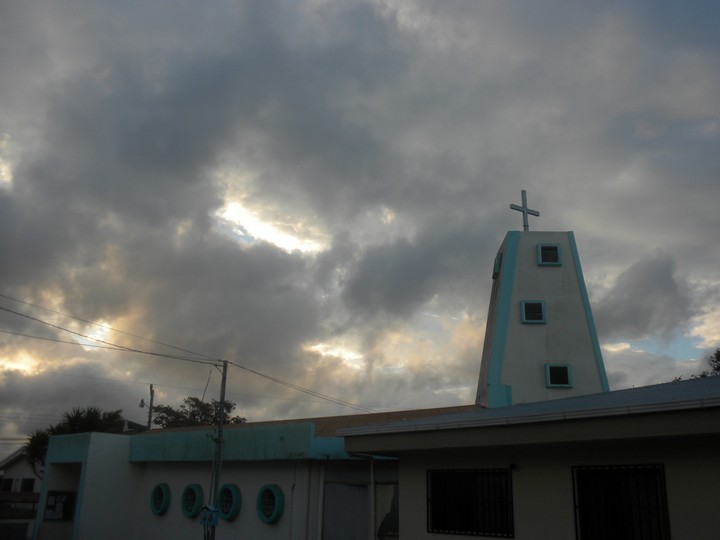
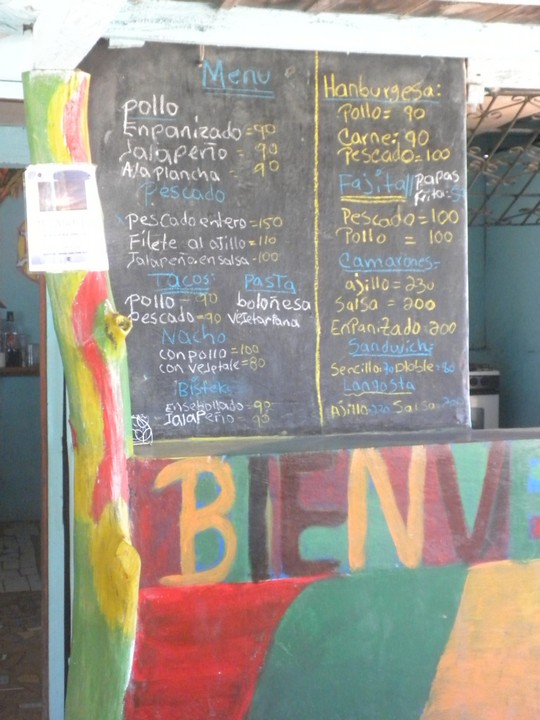
Beach menu

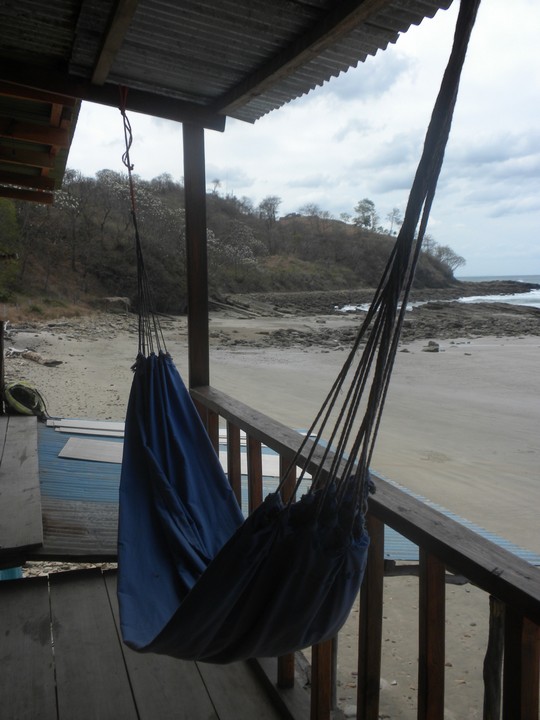
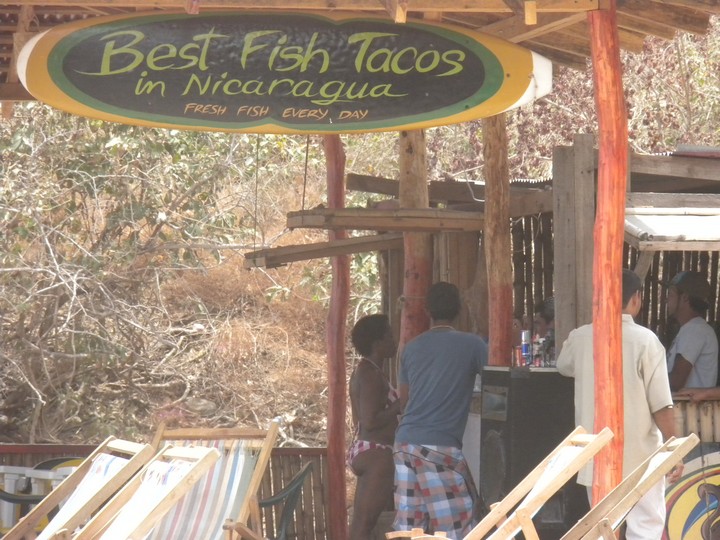
Not touristy in the slightest
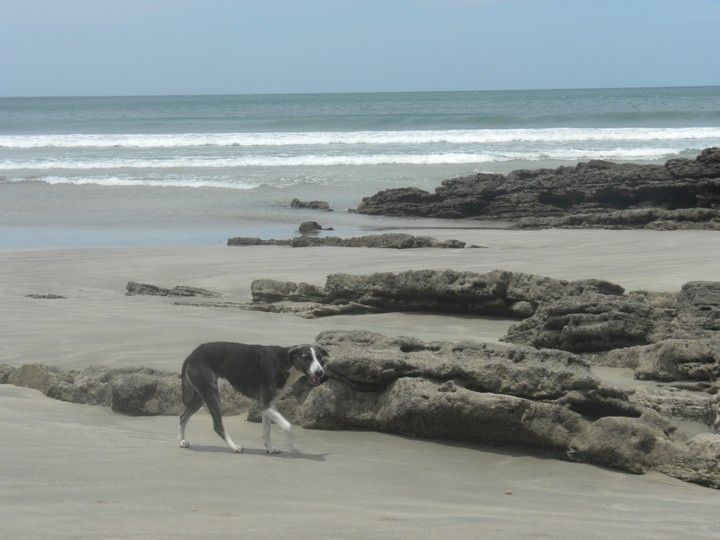

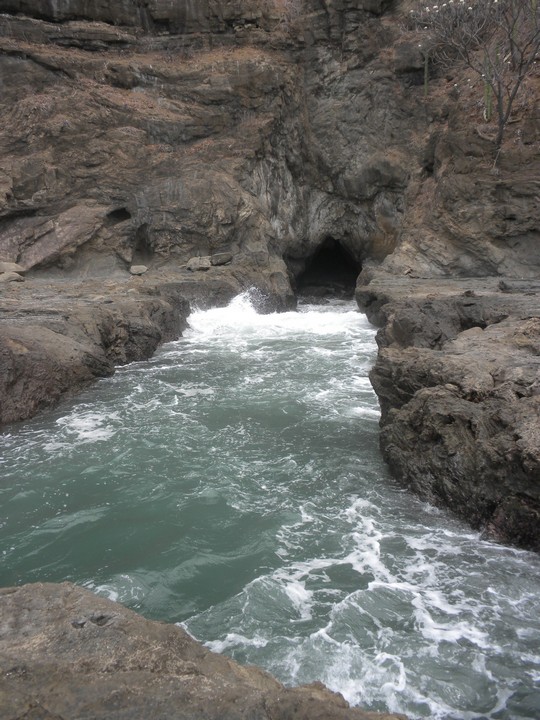
Sea cave
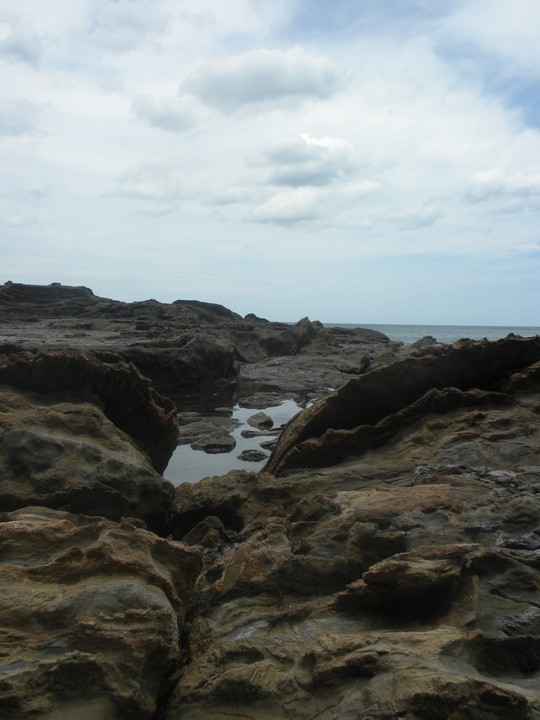
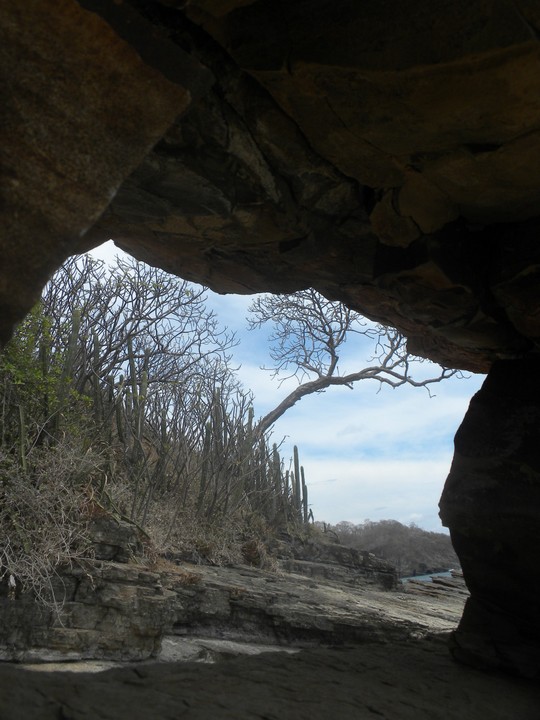
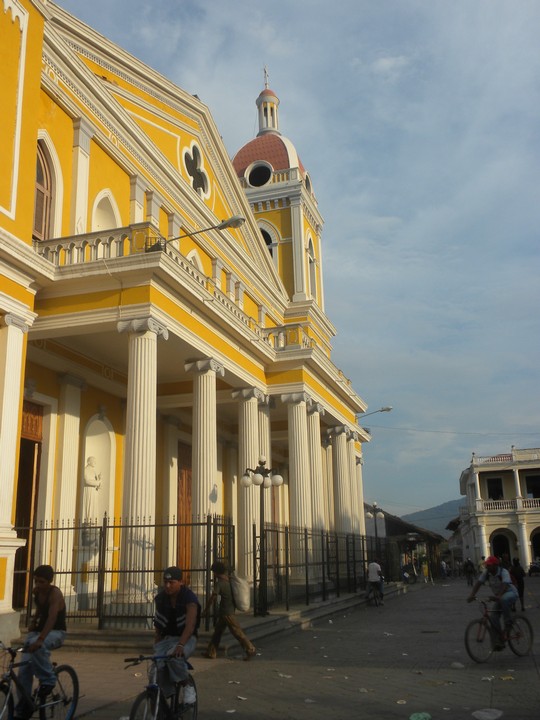
Granada
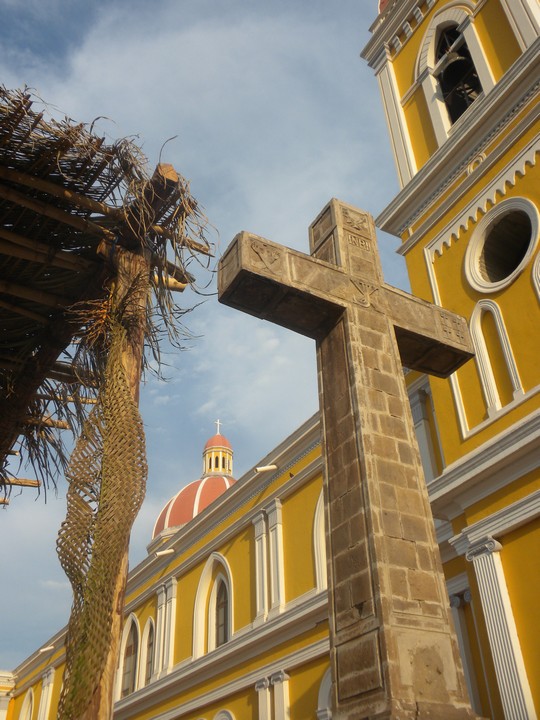
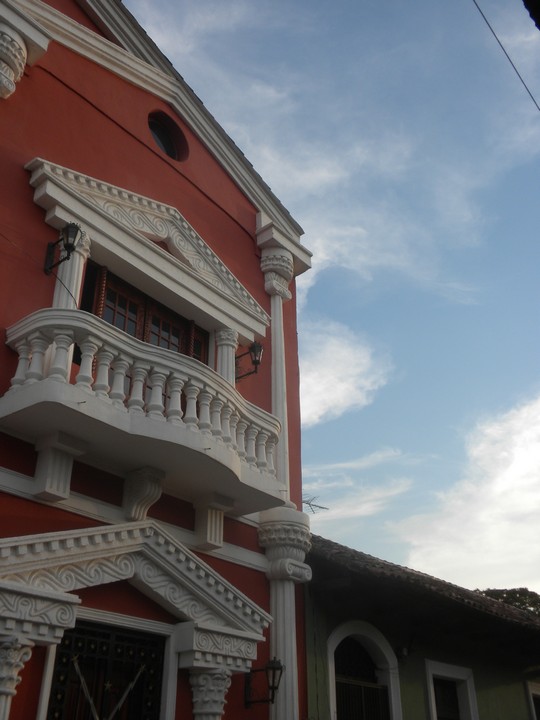
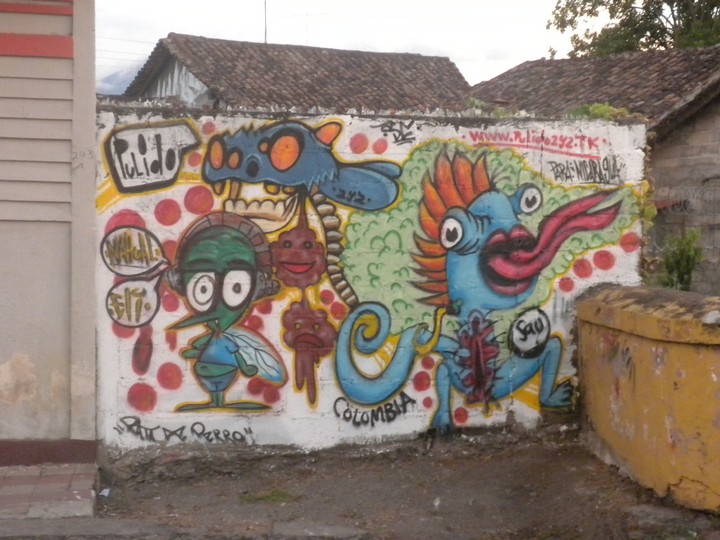

Abandoned hospital
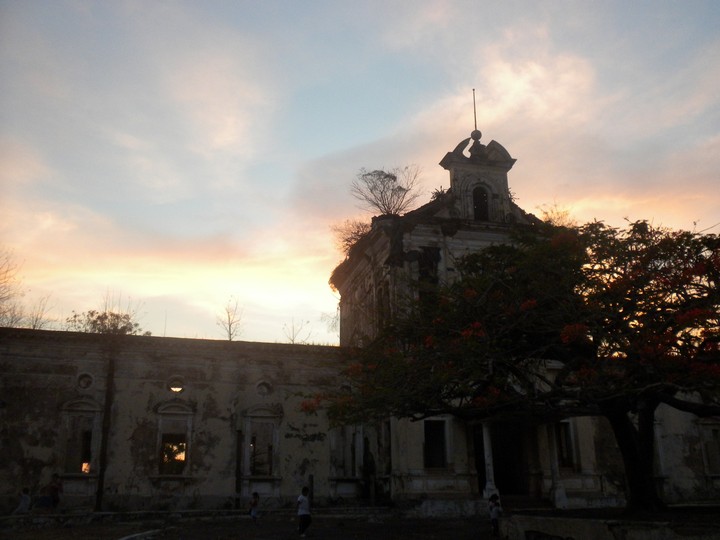
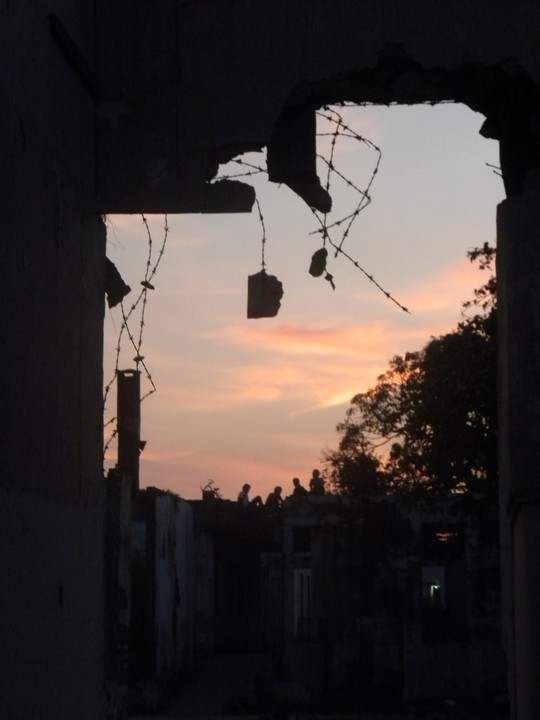
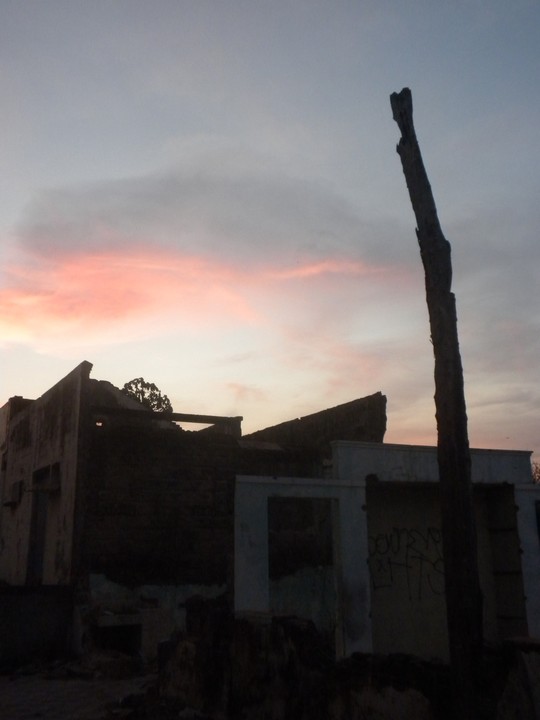

Quesillos
With only two days remaining until we had to fly out of Managua, our plan for the day was a tad ridiculous. We had to see all of the Pueblos Blancos, swim in a volcanic crater, climb another volcano and explore the lava tunnels, go souvenir shopping in Masaya, and find buses to Managua and onward to Leon where we would be spending the night. At some level, I think we had all acknowledged that this was essentially impossible, but that wasn't going to stop us from trying.
We walked through the sprawling city market to the bus station, eating everything in our path. The tamales were the best deal; these contained a generous glob of steamed corn paste with a sweet gooey center wrapped in a banana leaf for 2 cordobas each. Another cart gave us bags of cacao and other delicious drinks for 5 cordobas each. Yet another vendor had bread shaped like a fish for 10. We boarded a bus to Diria and, from the stop, crammed into a tuk-tuk to go 2km uphill to the Mirador El Bosquete for 30 cordobas. We followed a trail downhill past an ancient Laundromat to the lake far below. Unlike the previous crater, this one had a sandy bottom and loads of cool, clean water. We splashed around for an hour before making the return ascent to the rim. The group picked up a round of refreshing Fantas at Restaurant Dicky Dick and walked back downhill to the highway.
We split into two groups to hitchhike to Catarina, the next of the villages. But Matt quickly gave up and flagged down a tuk-tuk. My group jumped on as it passed. The tuk-tuk is a tad underpowered for driving on hilly highways with six passengers, but we fortunately only had a short distance to go. The driver informed us that there was an admission charge to the town, but he could take us a back way and avoid the fee if we paid him a little extra; this sounded a tad sketch so we declined the offer. It turned out that we did in fact have to pay $1 per person, but the viewpoint that this afforded was nothing to scoff at.
We once again returned to the highway and split into groups. A minibus pulled up in front of Matt's group first, but they declined the ride; Carolanne and I couldn't figure that one out, but we squeezed onboard as it passed. We walked up to Masatepe's central square. As we arrived, an old man grabbed our attention and pointed frantically at a tree overhead. A sloth lounged lazily in the branches, and gradually, everyone in the immediate area came over to watch it. A tuk-tuk arrived with Matt and the girls, and they too were instantly mesmerized by the sloth's awe-inspiring inactivity. We walked up the road to a restaurant famed for its rendition of the local specialty, tripe soup. Though it was in the middle of a non-descript residential street in the farthest corner of the town, it was a pretty huge place and definitely appeared to be of the higher-end touristy variety. A large group of businessmen sat at one table, and another corner held a large group of drunkards who laughed hysterically as a troubadour played his mandolin. I may have been the only one that actually ate any of the tripe in the soup; while the taste wasn't offensive, the broth was mostly flavorless and it was pretty unexciting. Destiny ordered a chicken plate which was fairly delicious. When the bill came, we found that the prices for our meals ranged from 75-125 cordobas, and since we'd typically been paying 50 or less, this caught us a little off-guard. We paid the bill, stormed out, and found a nearby bus to Volcan Masaya.
Halfway to the volcano, we realized that the park would be closing in 15 minutes and decided to go to the city of Masaya instead. We took a taxi in from the highway and found a hotel that had on offer a pair of rooms for 130 each. It was nearing dusk but we were determined to find cacao before we did anything else. We hiked all the way out to the market and, en route, found a small shop that sold the delectable iced beverage. The market was just closing as we arrived and there were many bargains to be had; I found a kilo of sliced mango for only 3 cordobas that would serve as the primary food source for the group on the next day's hike. We returned to our rooms and, being completely exhausted with no idea of what else there was to be done in the town that night (aside from the innumerable casinos we passed), reluctantly turned in around 7:30.
We would learn the next night that Mike and Rachel had spent the day learning to surf at Playa Maderas.
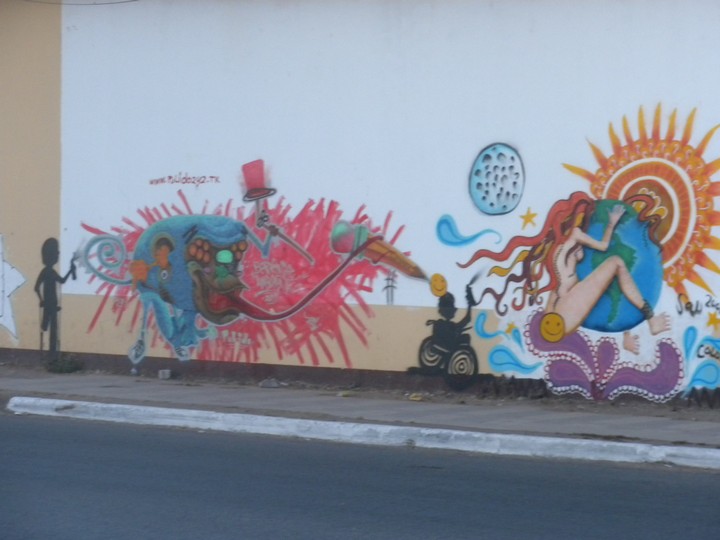
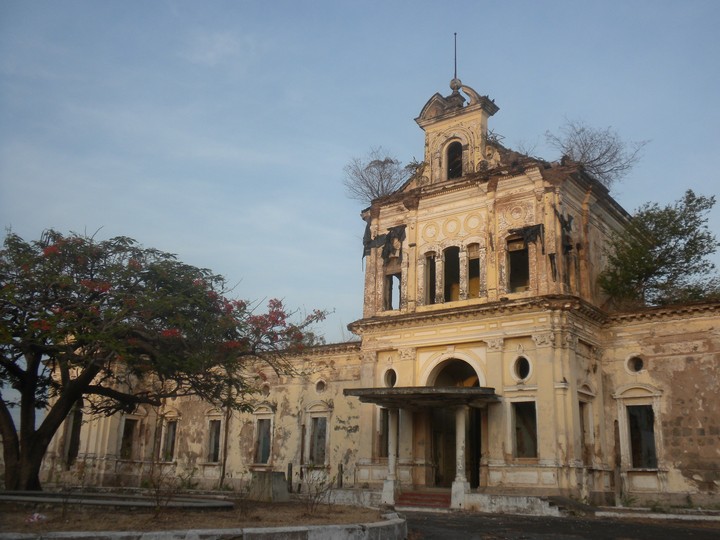
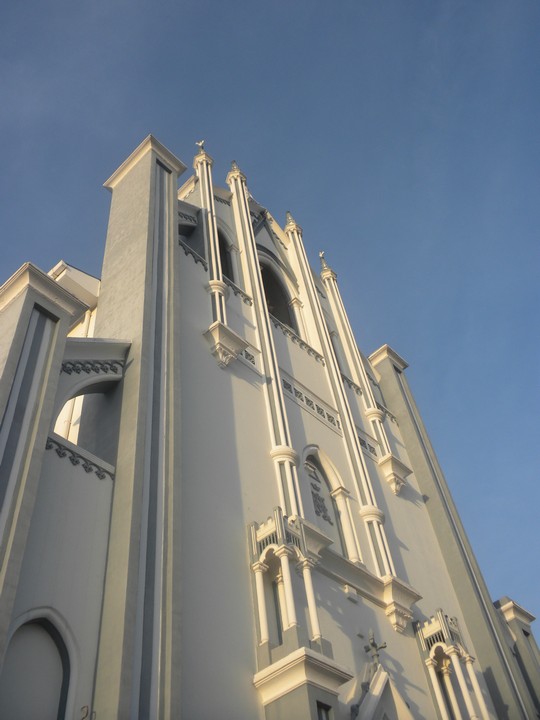
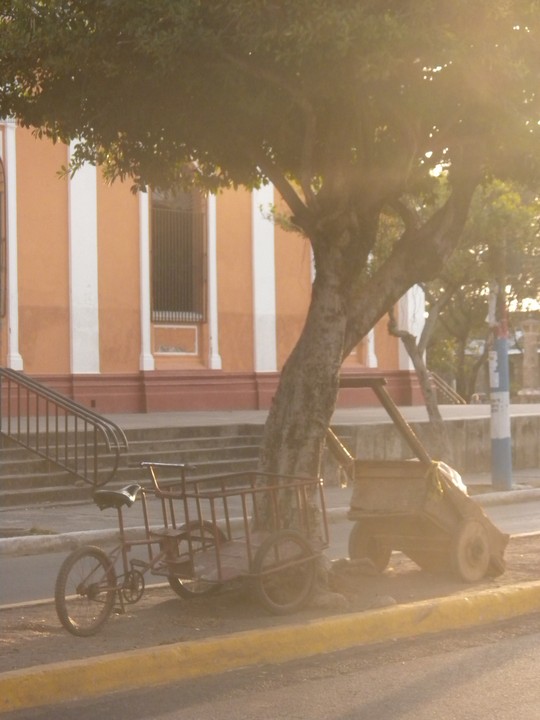
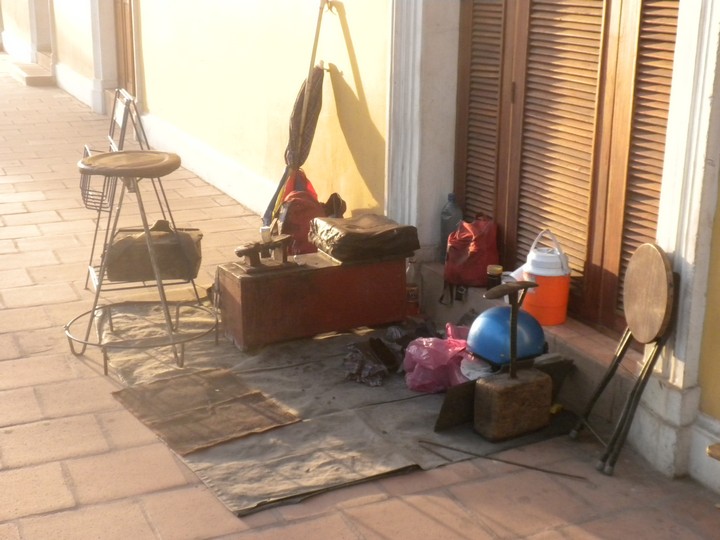
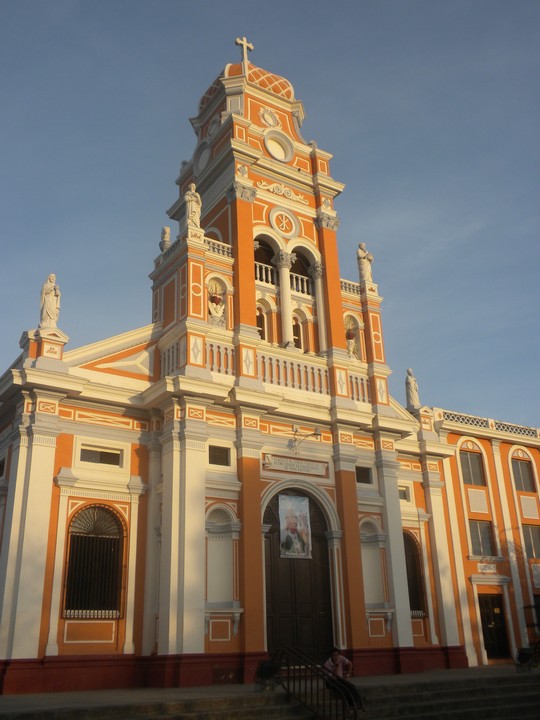

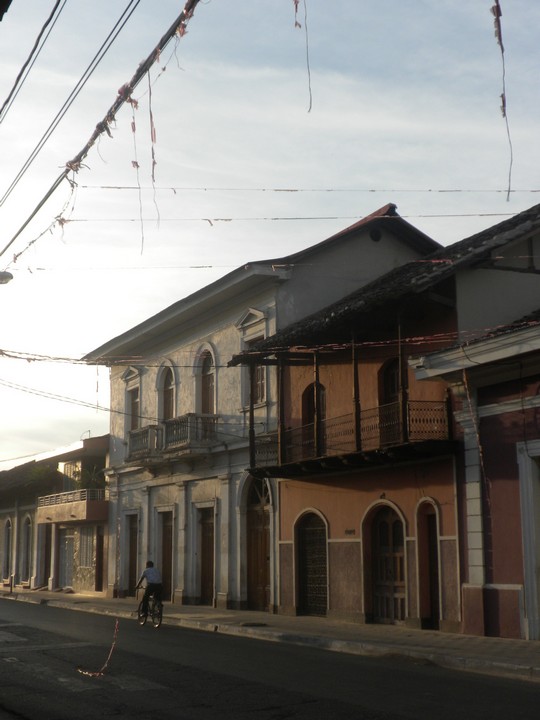

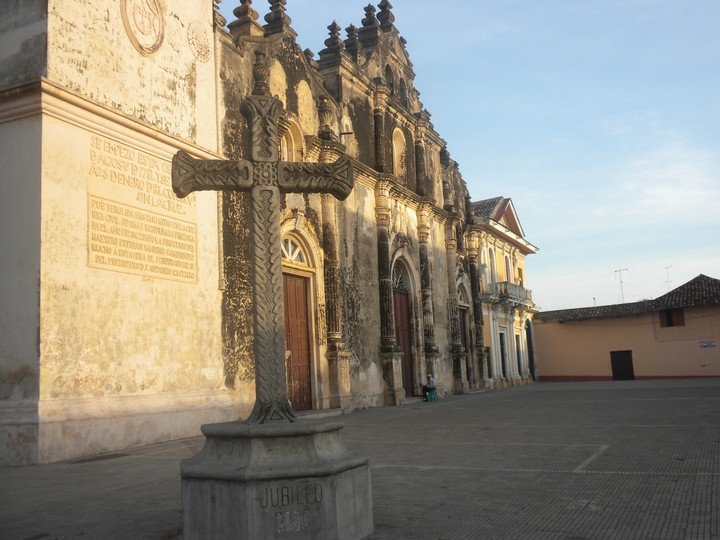
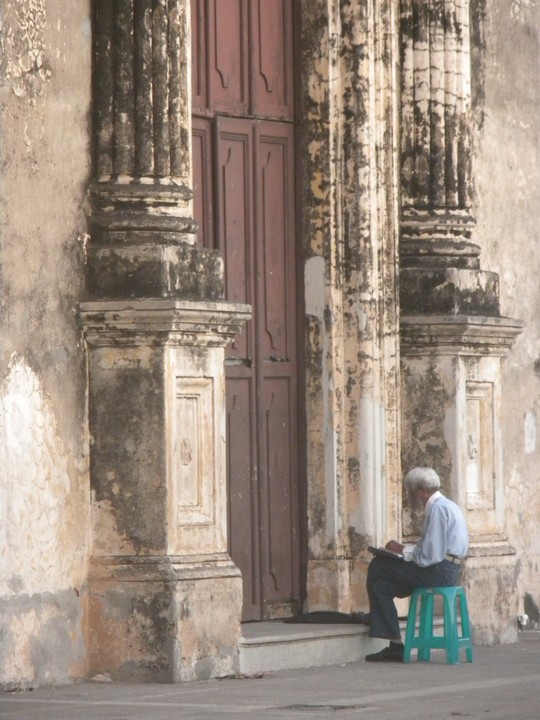
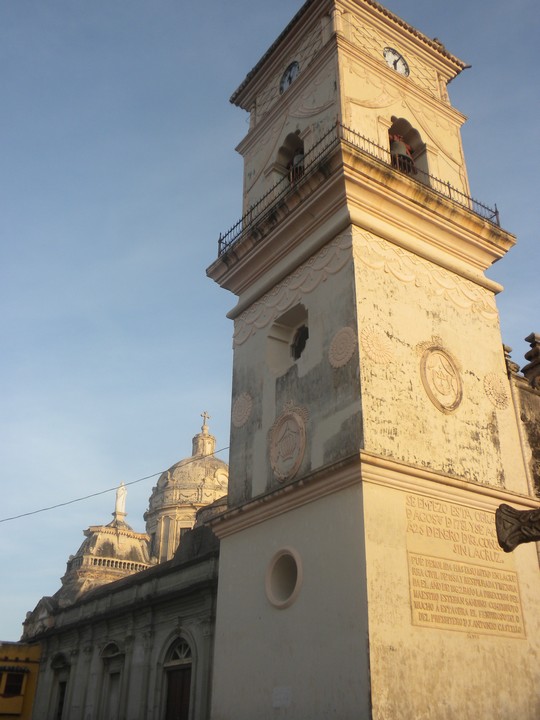
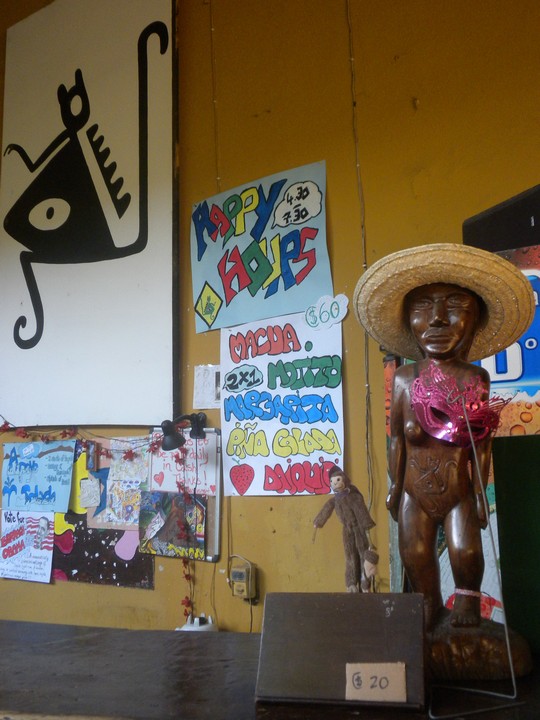
Bearded Monkey Hostel
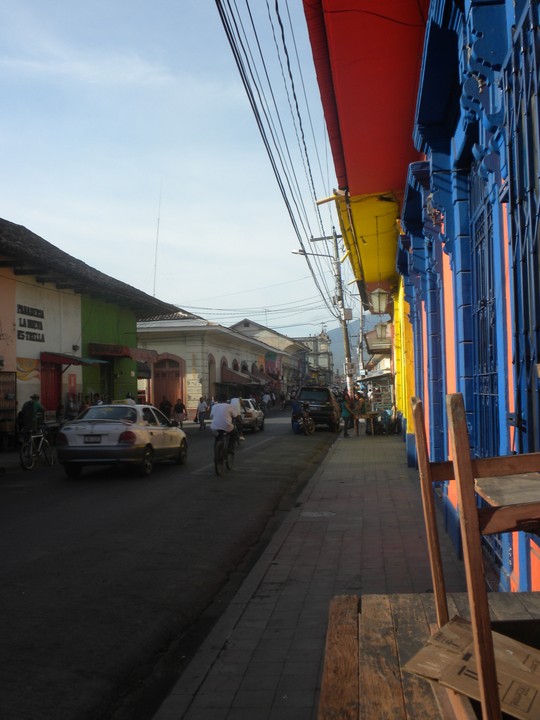
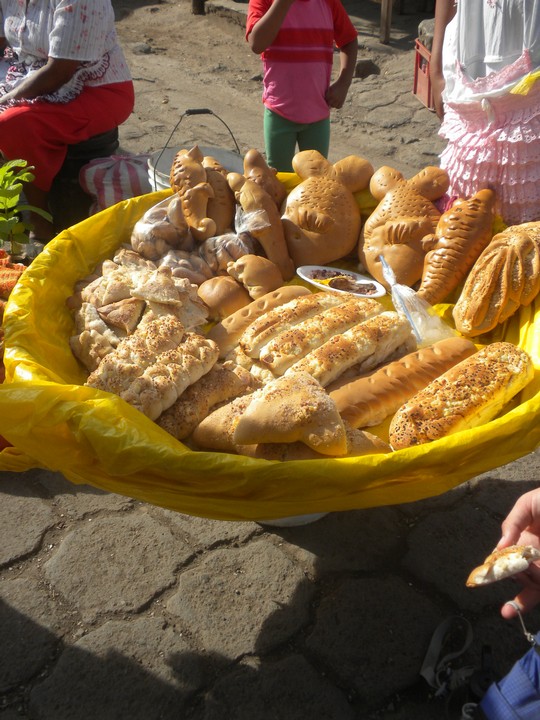
Fish bread

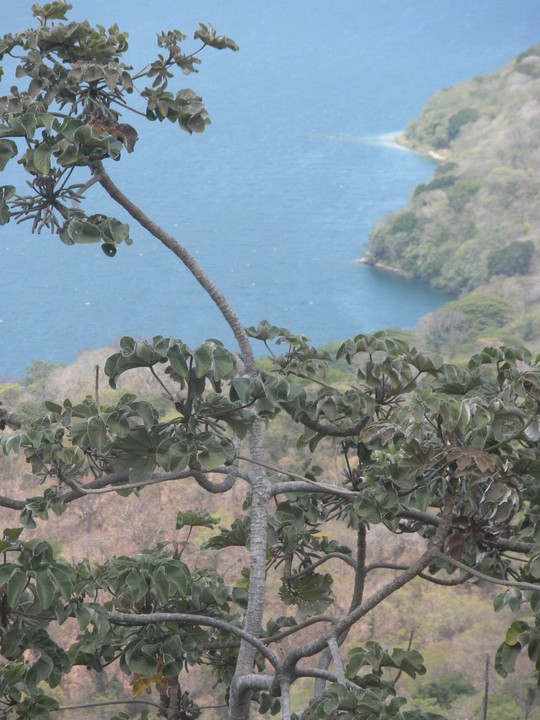
Diria overlook

Catarina tourist trap
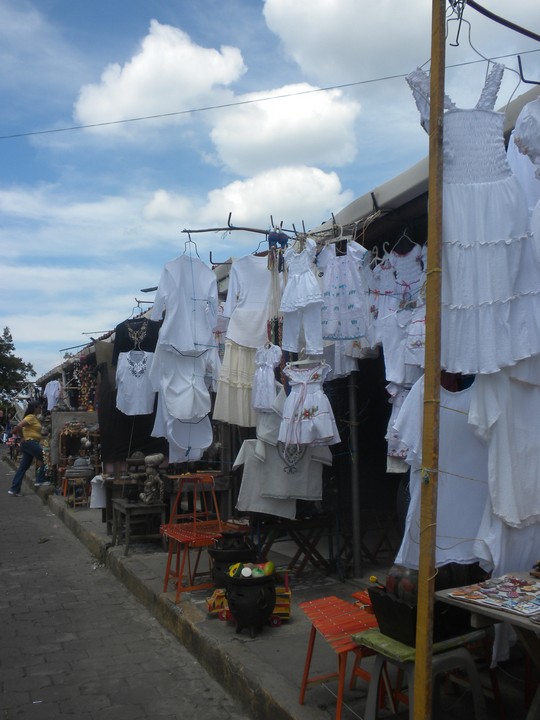
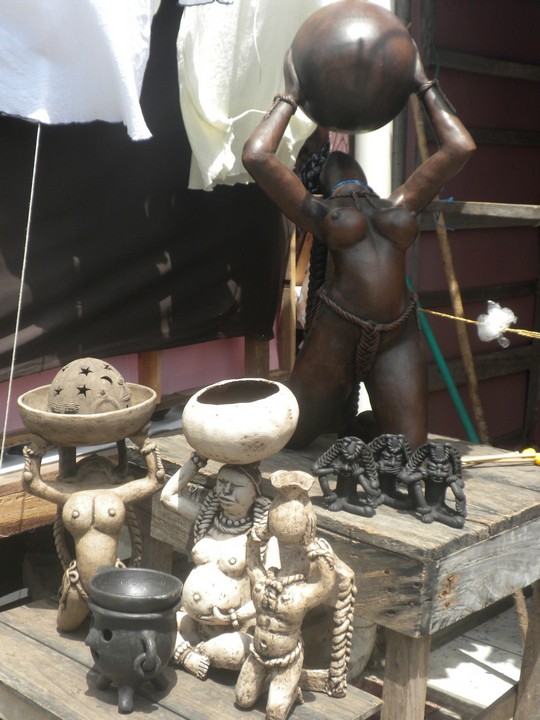
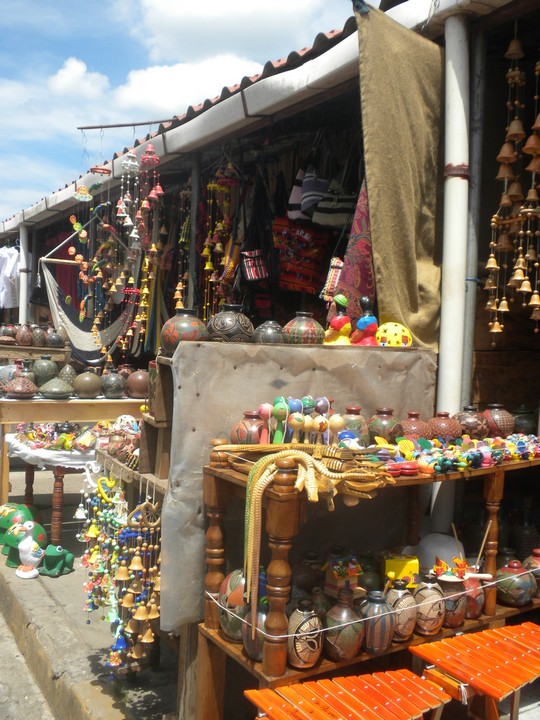
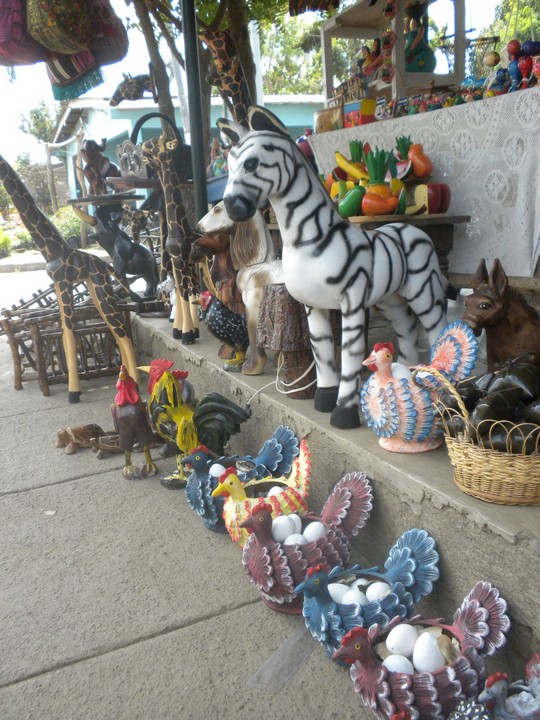
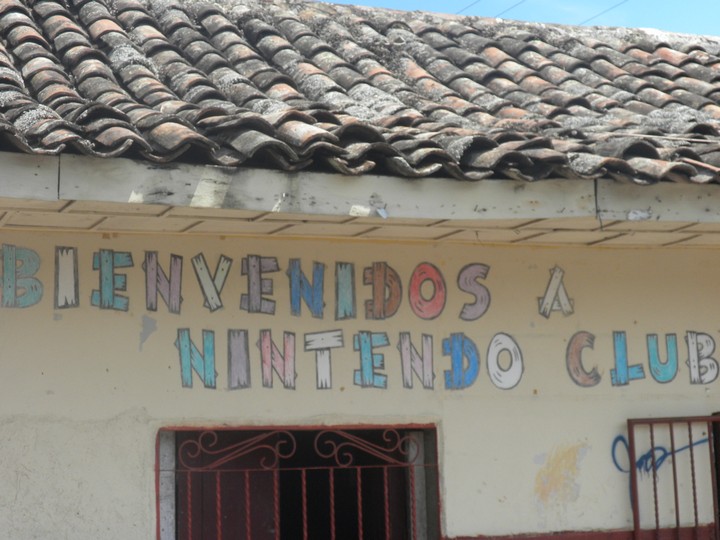
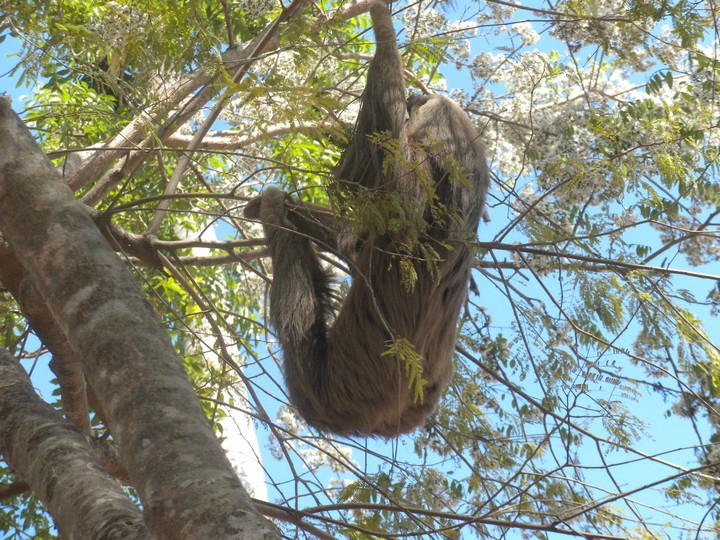
Random sloth!
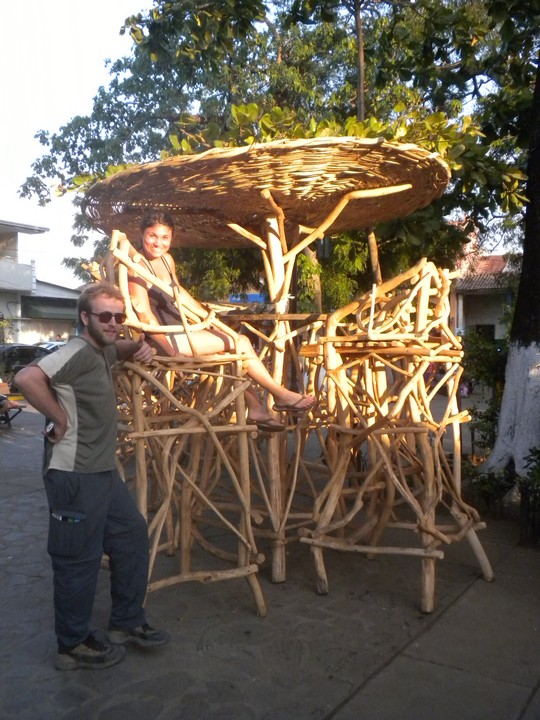
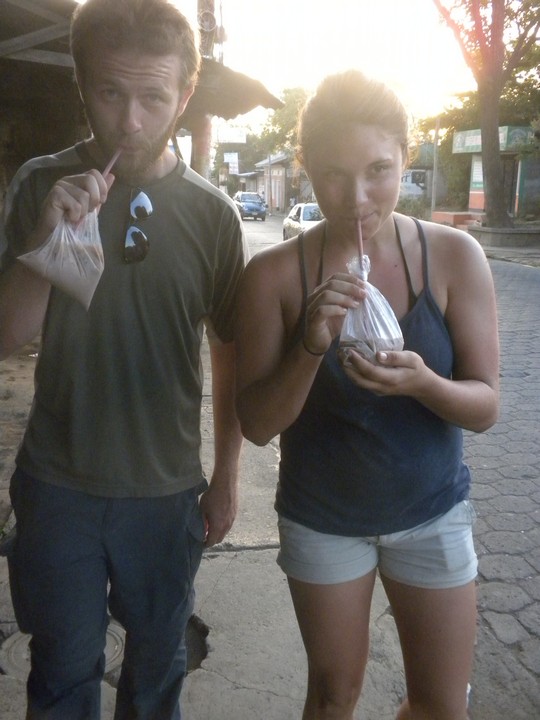
Nice ice-cold bags of cacao drink
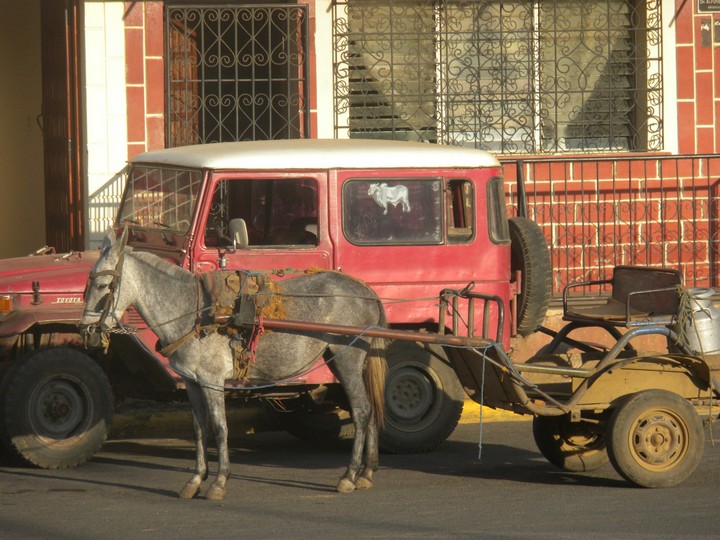
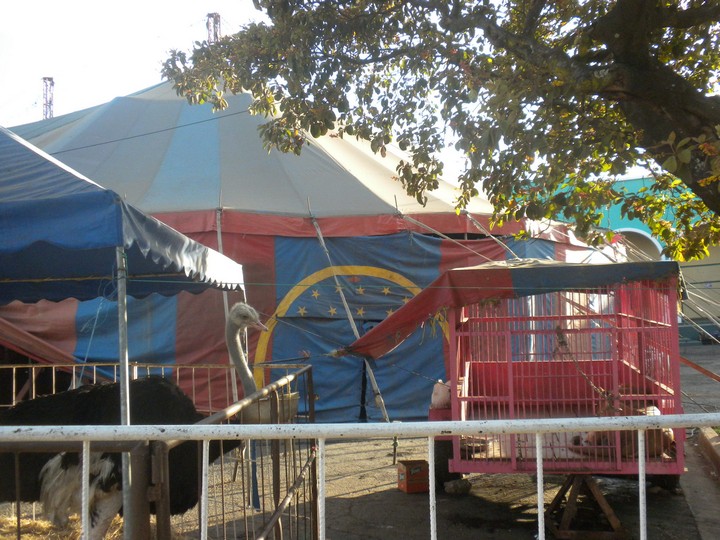
Circus
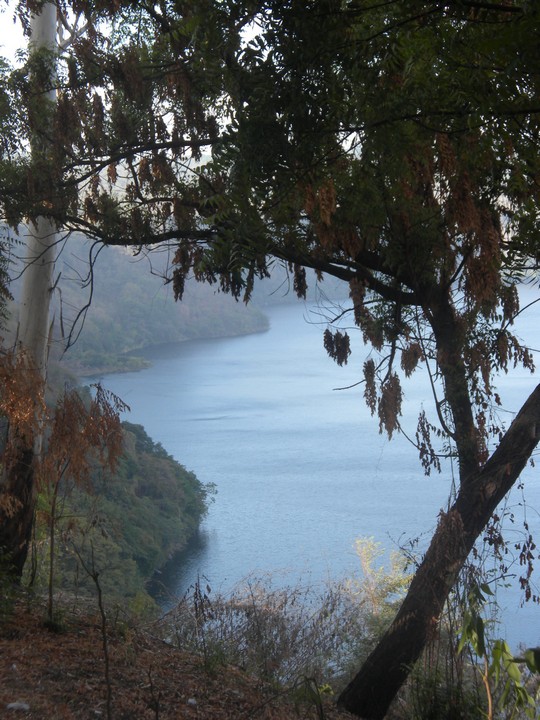
From the Granada Malecon
We stopped by a little diner for breakfast and got some huevos rancheros and beet juice; the beet juice was not a crowd favorite. Just up the road, we found a circus tent with ostriches, lions, and a midget lion tamer; we lamented not having known about this the night before. The Coyotepe Fortress was up the highway a few kilometers and then another kilometer up a steep road; we decided to cheat a little and grab a taxi straight there for 80 cordobas. Our driver drove past the parking lot and straight into the fort; this was true door-to-door service. We decided at that point that we didn't really feel like walking to the volcano either and negotiated for the driver to wait and provide another ride back to the highway and down the road to Volcan Masaya National Park. Coyotepe has several good viewpoints over the city, volcano and surrounding plains, but the real attraction is the network of underground prisons. You can wander around the first level by yourself and spray on whatever graffiti you'd like, but the second level requires a guide (which is included in the $1 ticket). The guide relates to you all kinds of interesting anecdotes, like how they used to torture the prisoners by hammering nails into their balls, or how they would dump excrement through the vents of the cells - the stains are still visible today.
Our driver took us as far as the park entrance. We tried to negotiate a student discount with the gatekeeper but ended up having to pay the whole 100 cordobas. We asked about the lava tunnels and he at first gave us the standard answer that we would need to pay a guide 50 each to take us, but then his face beamed as he was hit by a flash of inspiration - I could be the guide and the others could be my tourists, he explained, and none of us would have to pay anything; he asked for my ticket and gave me back 100 cordobas - guides apparently don't need tickets.
We walked 1.5km up to the visitor center/museum and learned all about the local flora and fauna; more importantly, we got a much needed break from the sun and walking. From there, it was a brutal 6km through fields of dry lava to the crater; fortunately, on one of our frequent mango breaks, a Honduran man pulled over and had us squeeze into his SUV. At the overlook parking lot, signs instruct you to park your car facing out and limit your visit to twenty minutes or less. Sulphurous gases spew out of the main crater; there's supposedly lava down there somewhere but you can't see it without hopping a few fences and putting yourself at serious risk of being burned alive. We hiked a rim trail around one of the other craters, which turned out to be rather brutal, but offered some nice views. When we returned to the lot, we were pretty badly exhausted and dehydrated, but luckily there was a park ranger waiting with a cooler, selling ice cold water bottles for an absurdly reasonable 10 cordobas. We asked him how to reach the lava tunnels and he explained that we needed a guide, which we would need to acquire back at the visitor's center; I lacked the confidence or the Spanish competency to explain to him that I was in fact the guide. We had too little energy to pursue the lava tube idea further, and two of us walked to the exit of the lot to flag down a car; when an SUV stopped to give us a ride, the others raced over and jumped in the back. That car took us back to the highway where we jumped on a ludicrously overcrowded bus back to Masaya; I dove through the crowd that was pressed up against the door, while Matt and Carolanne clung to the ladder on the back for the first few kilometers.
Back in town, I found a restaurant that served an unexpectedly delicious beef tongue plate. We then went to the artisans' market which was widely touted as the best place in the country to obtain souvenirs. It was a rather over-civilized collection of resellers' stalls that, for the most part, sold the same assortment of things. Cane toads were very popular; the artisans would manipulate the carcasses of these creatures into all sorts of suggestive positions; the same was done with lizards, and, to a lesser degree, with roosters. Also in unusual abundance were paintings of people sitting on toilets. Many of the items had prices; I naturally gravitated toward those that didn't. I would ask how much one such item cost, and then upon hearing the price, feign that I had lost interest and move on to something else. Not once, in all the times I executed this maneuver, did a vendor chase after me with the item and ask me to name a lower price. I found it impossible to shop under these conditions. I paid a young boy 10 cordobas to make me a cricket out of palm fronds, and that was to be the extent of my purchases.
Matt and Carolanne went to the hammock factories to find some hammocks and I went and got lost in the sprawling bus station market that seemed to go on forever in every direction and sold everything conceivable. We rendezvoused in the souvenir area and found a bus to Mercado Huembes in Managua.
We reached the station around 7. Using the city buses after dark wasn't highly recommended, so we were plenty wary as we haphazardly searched Huembes looking for the bus to the airport. Unfortunately, with five confused white people, we were a pretty obvious target, and a gang of four guys swept by and grabbed Carolanne's insulin pump - this is a very expensive medical device that sits on her hip and, quite inconveniently, resembles a pager or iPod. The rest of us didn't realize this had happened until we had already boarded a bus for the airport. In another half hour, we were dropped at the airport; the ride only cost 2 cordobas each, which worked out to be significantly cheaper than the $15 the taxis charge, but naturally, in the back of our minds, remained the nagging question of whether jumping immediately into a taxi might have prevented the costly theft. (The answer to this question is ‘not necessarily'. Unlike riding a bus, taking a taxi places your safety in the hands of a single individual; taxi drivers can take you anywhere they wish and are notorious for perpetrating particularly nasty crimes against tourists).
We met Mike and Rachel at the Tip Top Chicken store in the Managua airport. We traded stories from our respective adventures over the last few days. They had managed to avoid paying for a single ride, and had spent their final day hitchhiking all the way from the beach to the airport (saving nearly $4!), arriving around three that afternoon. We had four hours to kill until our 1am flight; we debated splitting a $7 liter of rum from the duty free shop, but reasoned that we would be driving in just a few hours' time and spent our last cordobas on some chocolate and coffee instead.

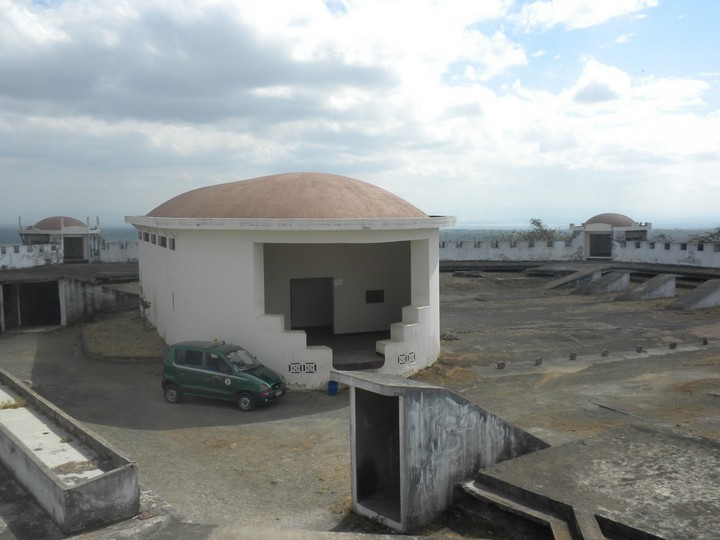
Coyotepe Fortress
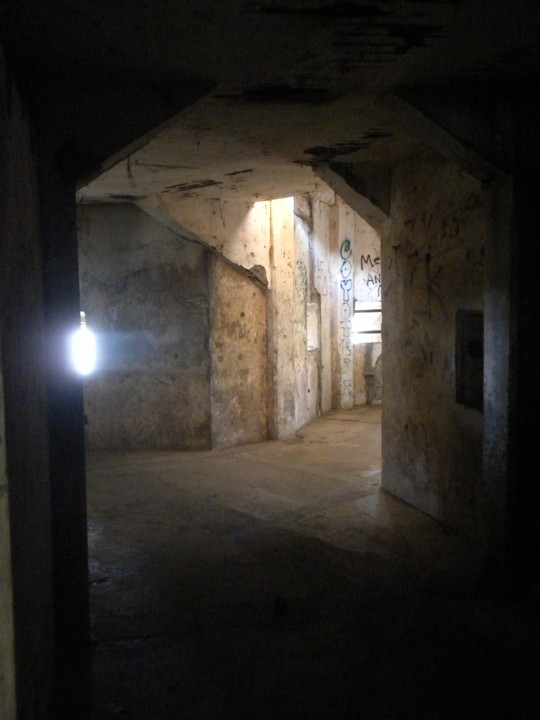
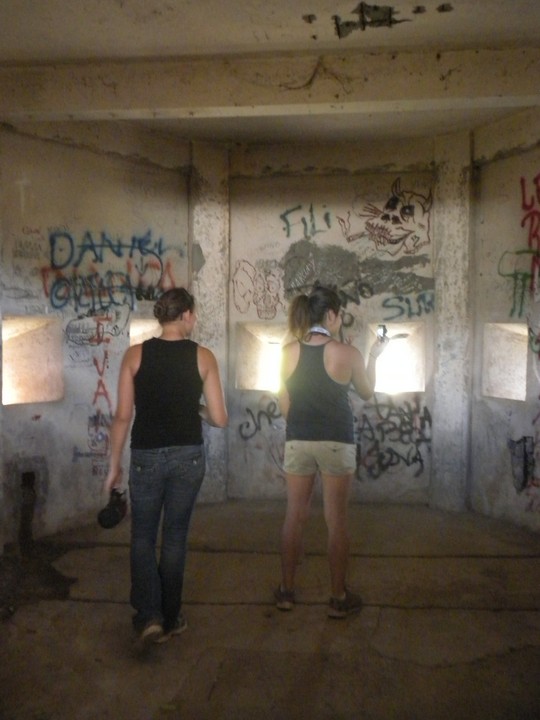
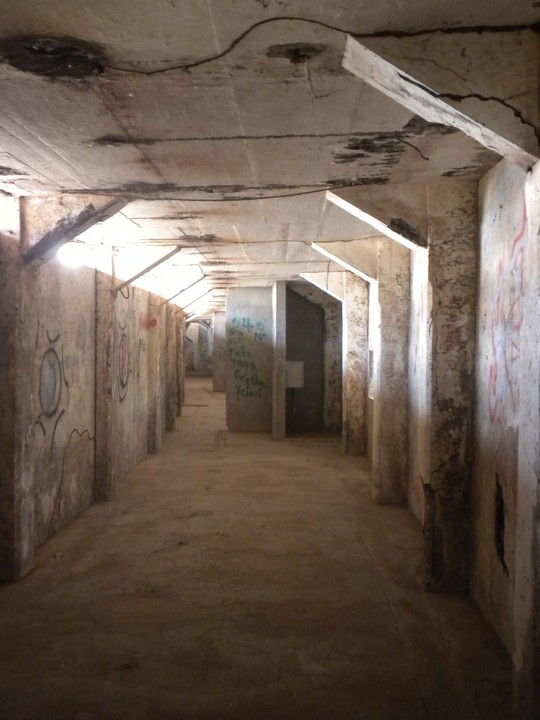
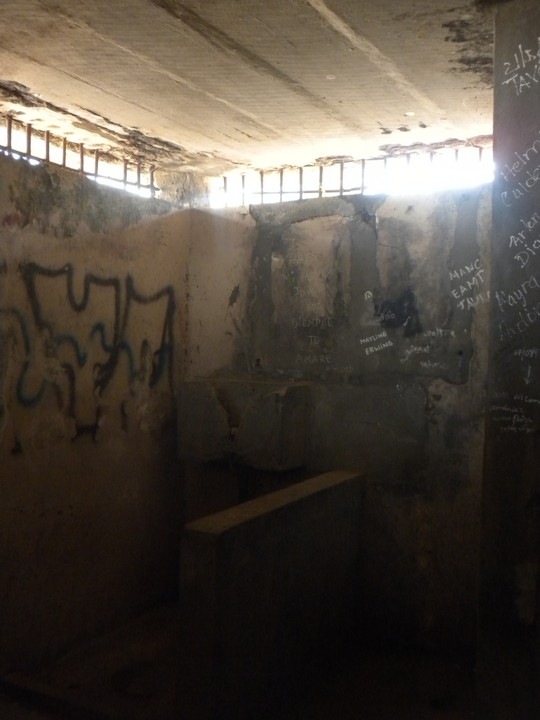

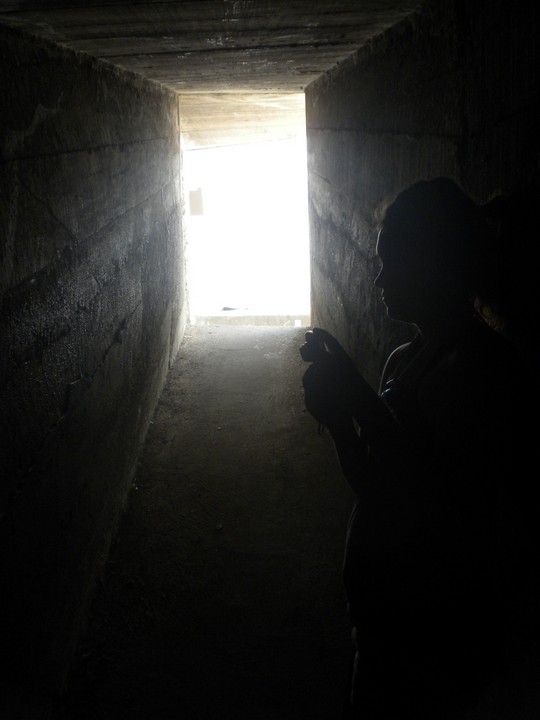
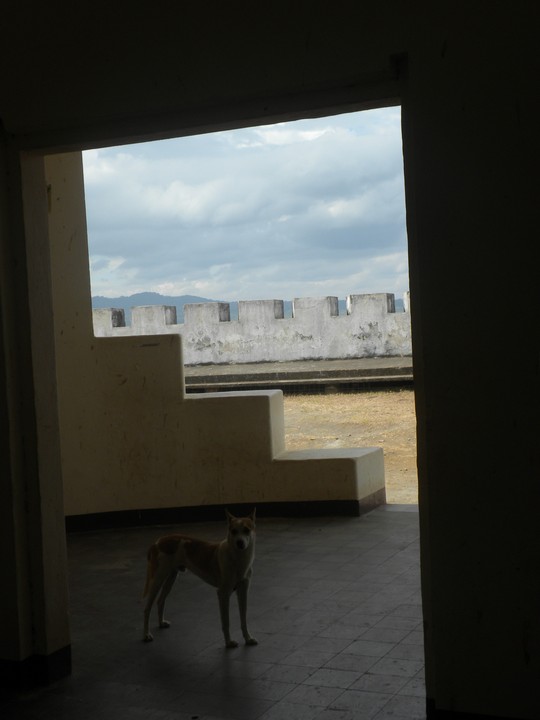
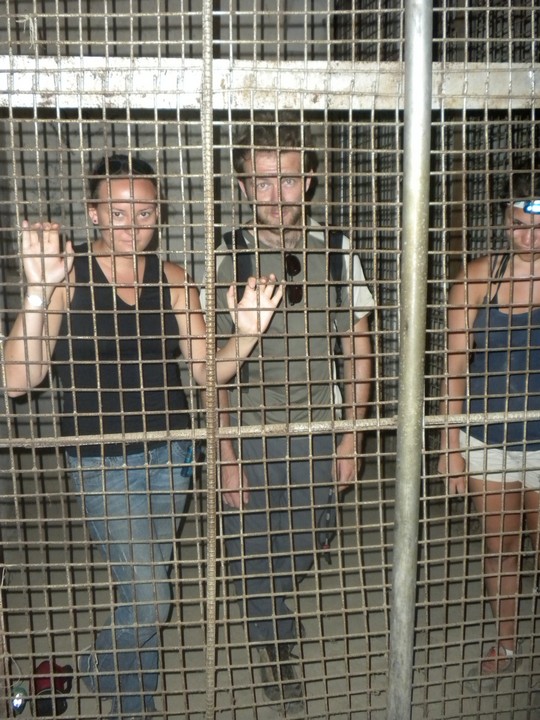
Prisoners
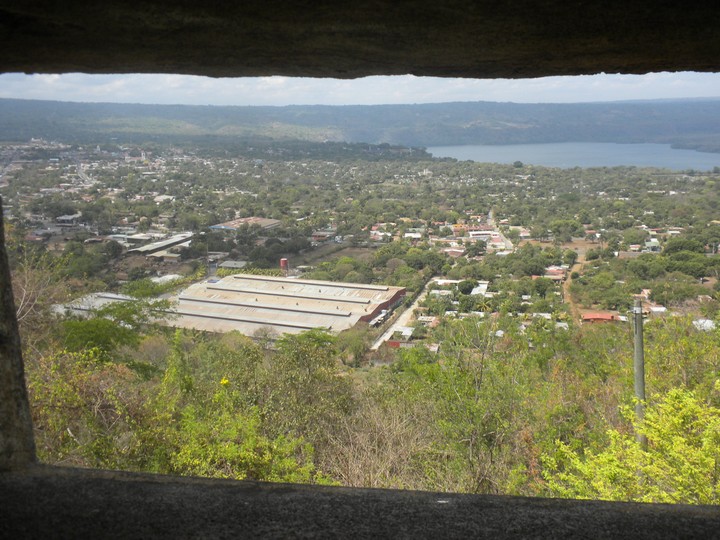

Gates of Hell
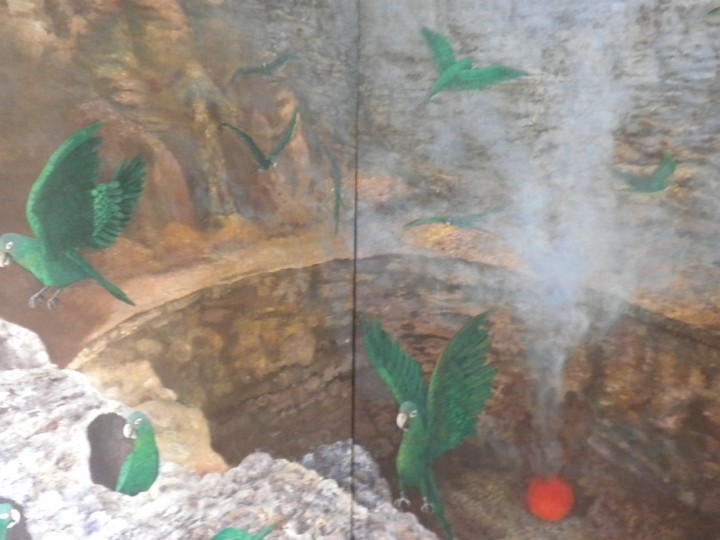
Crater parakeets

Be ready to flee
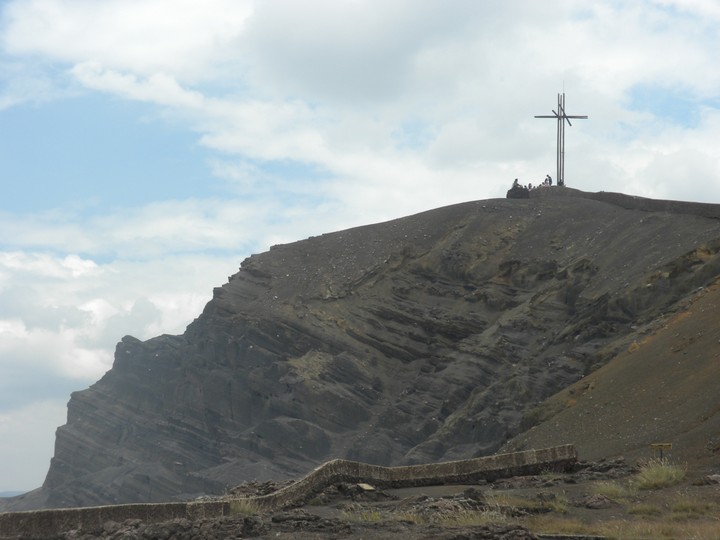

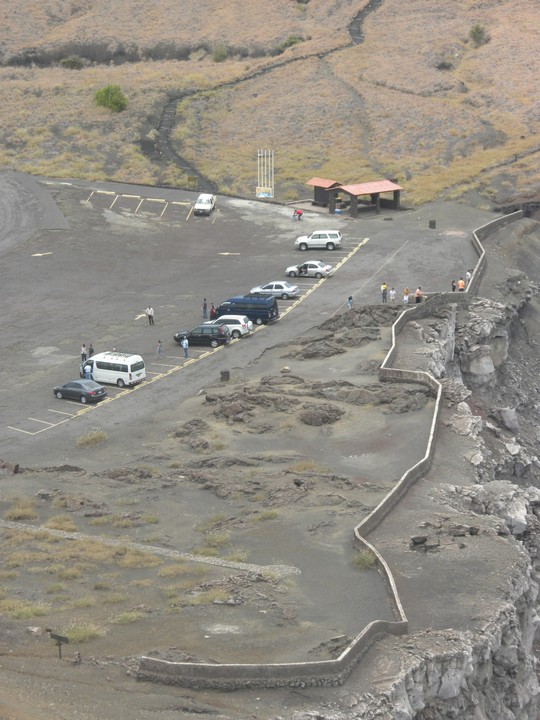
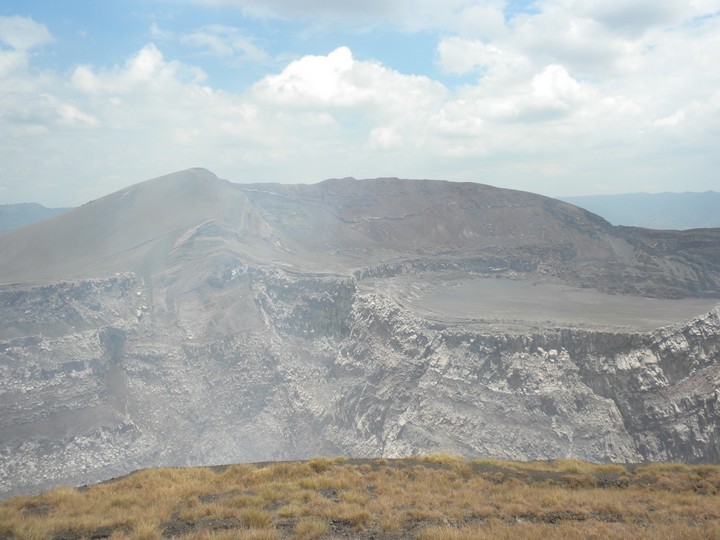
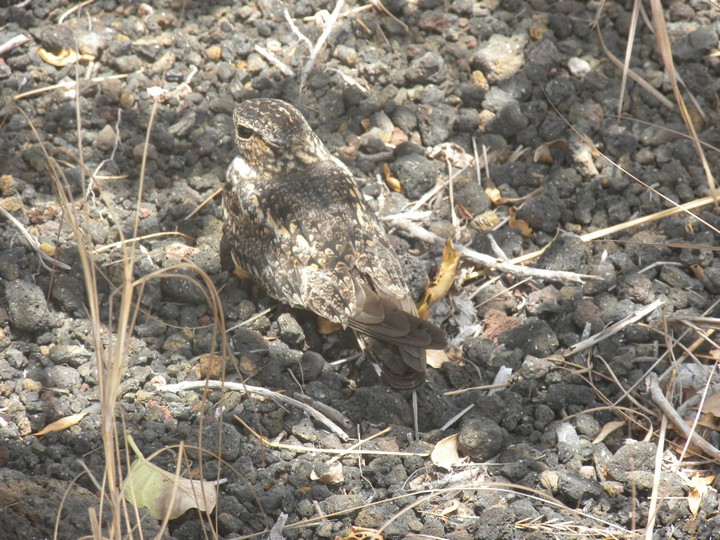
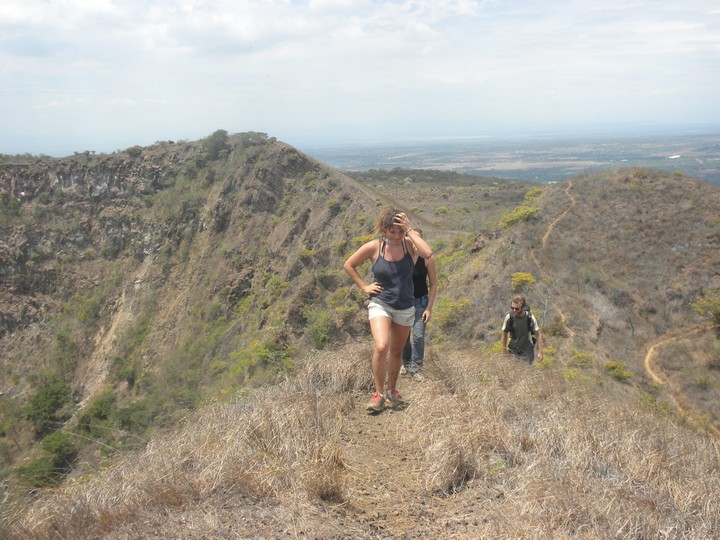
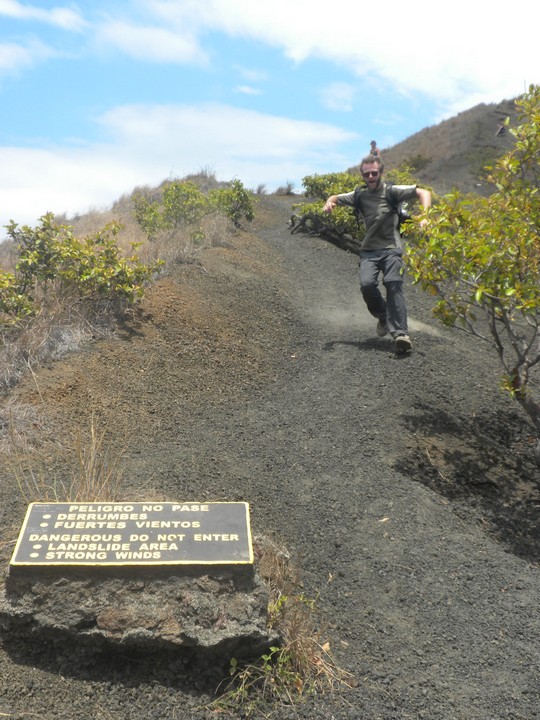

Beef tongue - delicious!
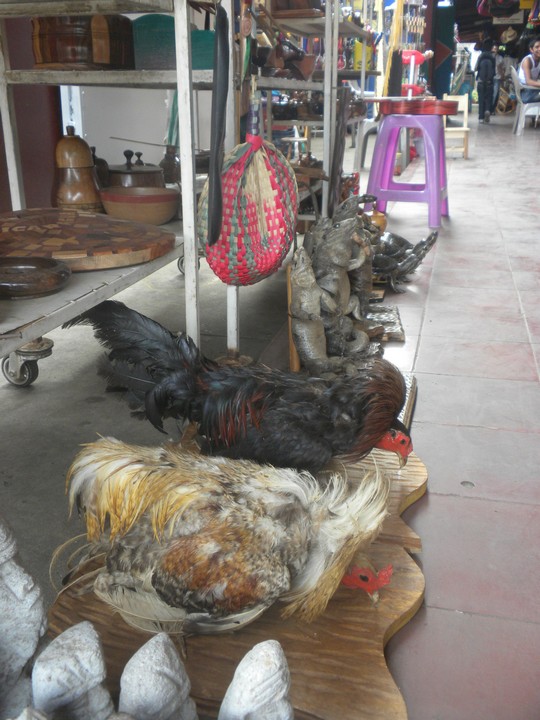
Weird choice of souvenirs

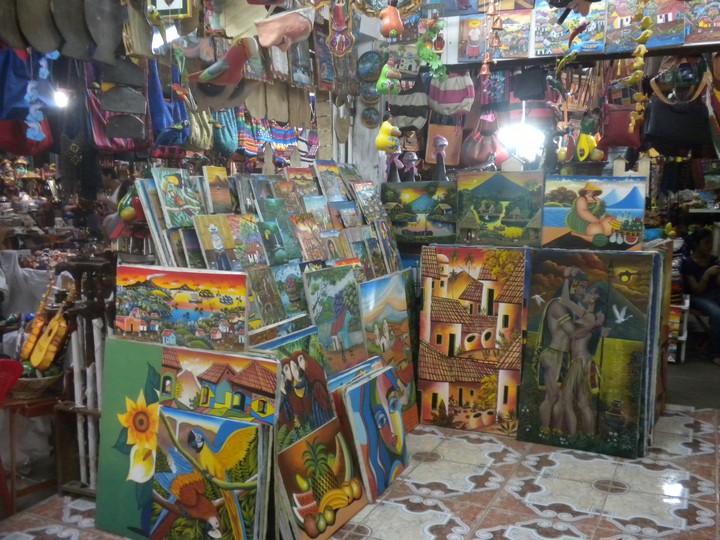

I-95 roadside attraction
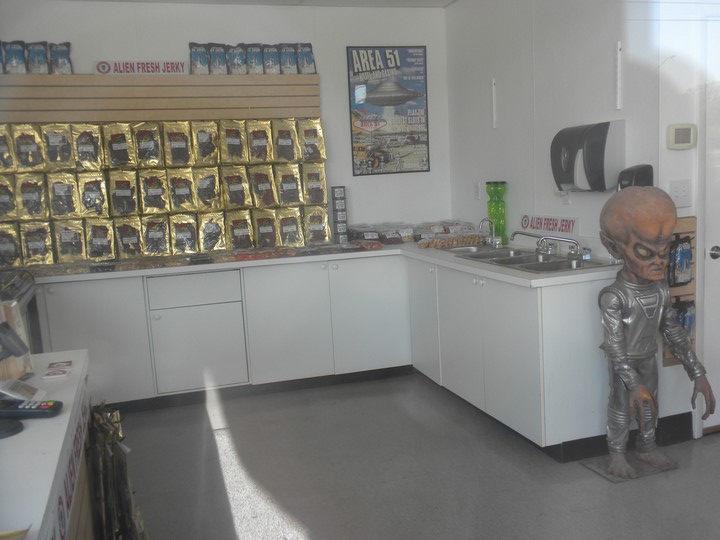
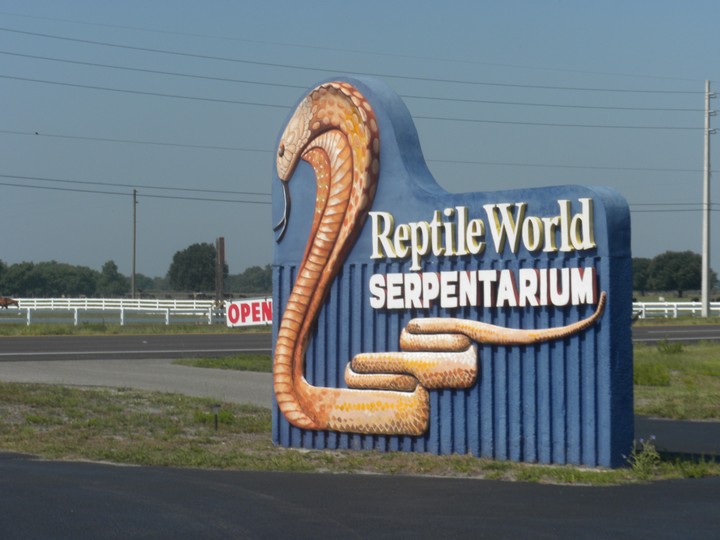
SR192 serpentarium - totally worth the stop, and we didn't even catch the noon venom show
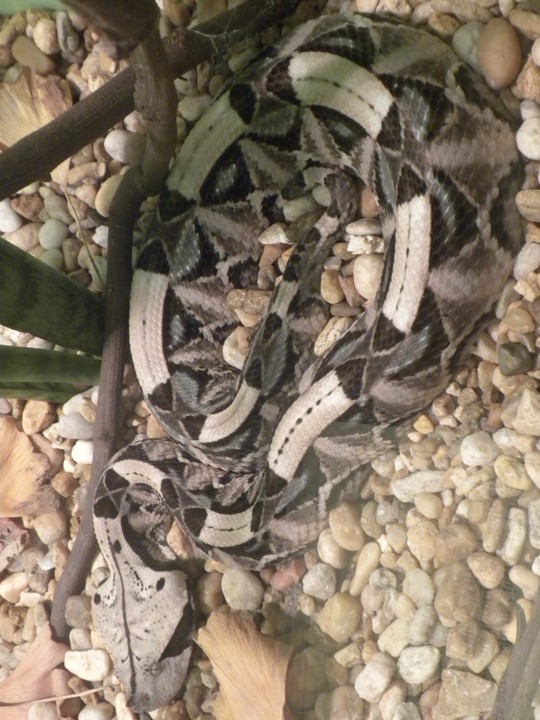

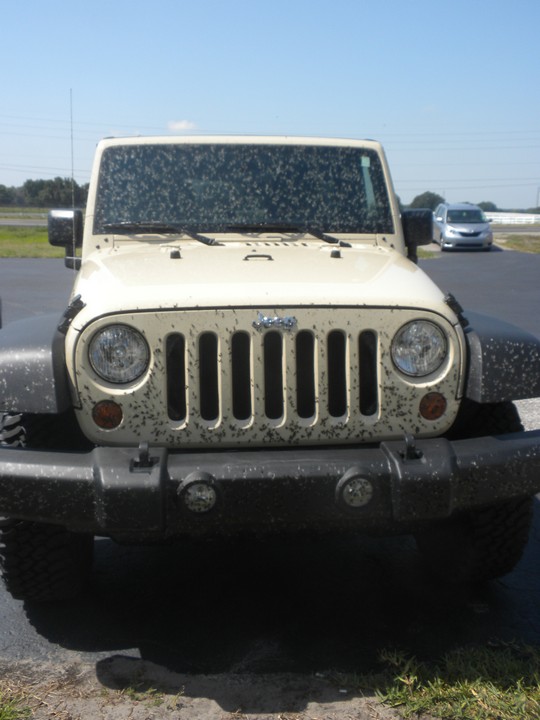
Love bug season

Why I should never leave anything at Frank's
| 1 US Dollar | = | 22.2 Nicaraguan Cordobas |
| 1 US Dollar | = | 2000 Costa Rican Colones |
|
Flight from Fort Lauderdale to Managua: $230
Nicaraguan airport entry tax: $10
Carne Asada breakfast plate in San Carlos market: 50 cordobas
Cafeteria-style breakfast with rice pineapple drink: 1800 colones
Nicaraguan land entry tax: $12
Tuk-tuk for 2km for 5 people: 30 cordobas
Approximate total spent on ground in both countries over 7 days (mostly on batidos): $194 |